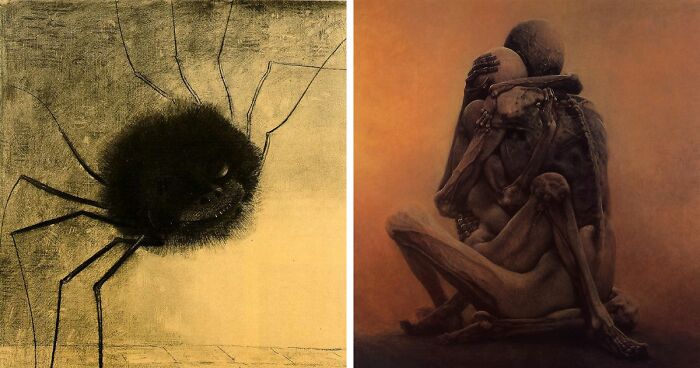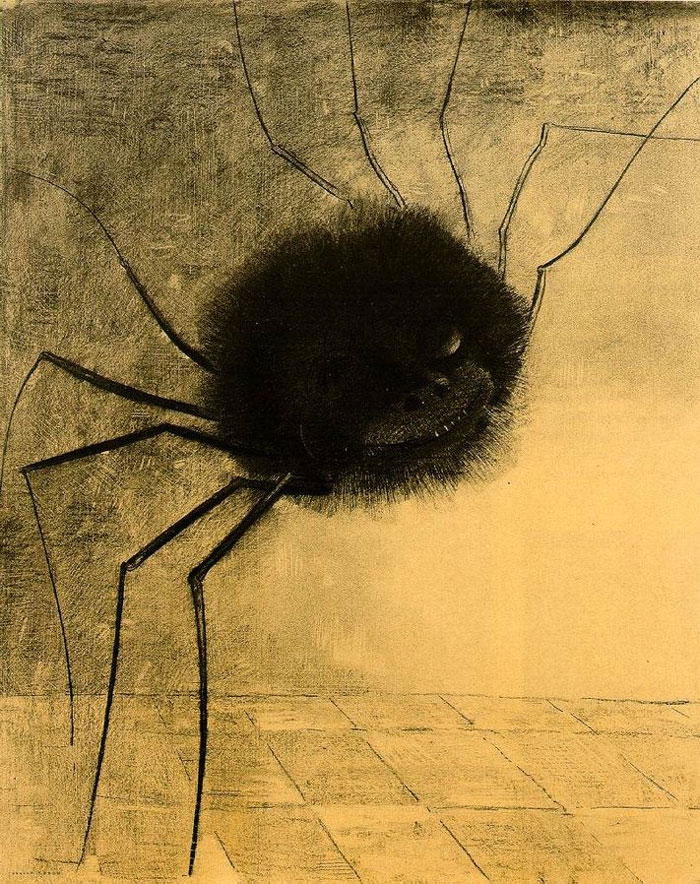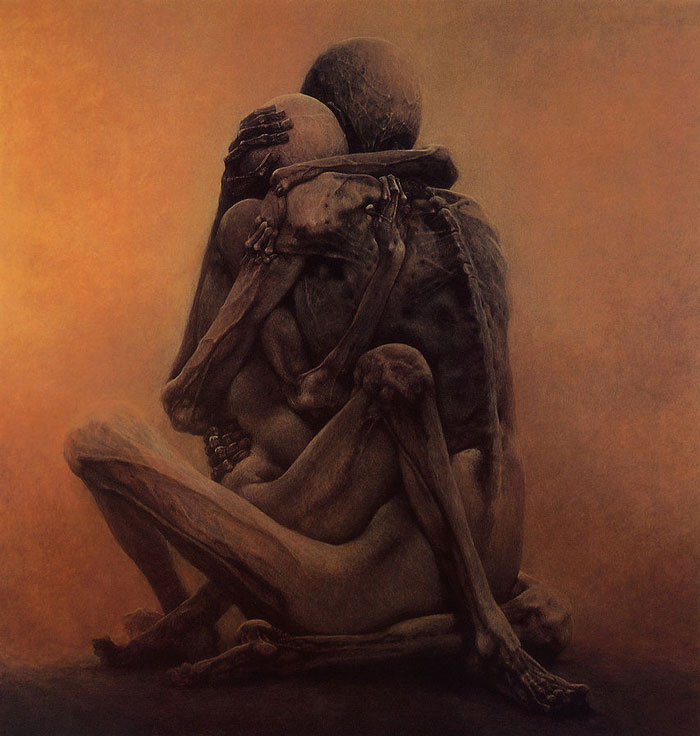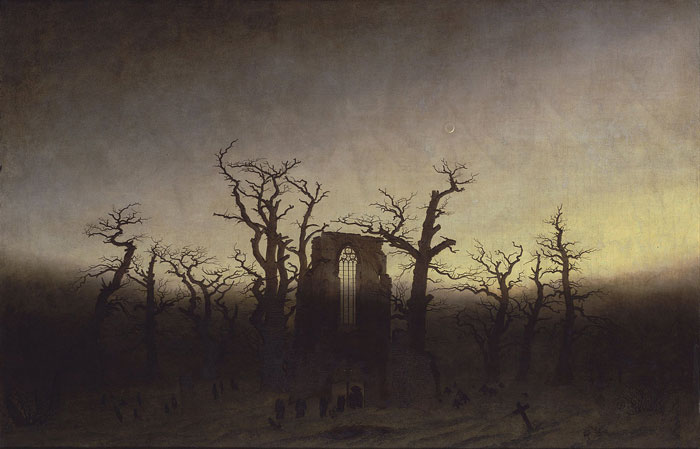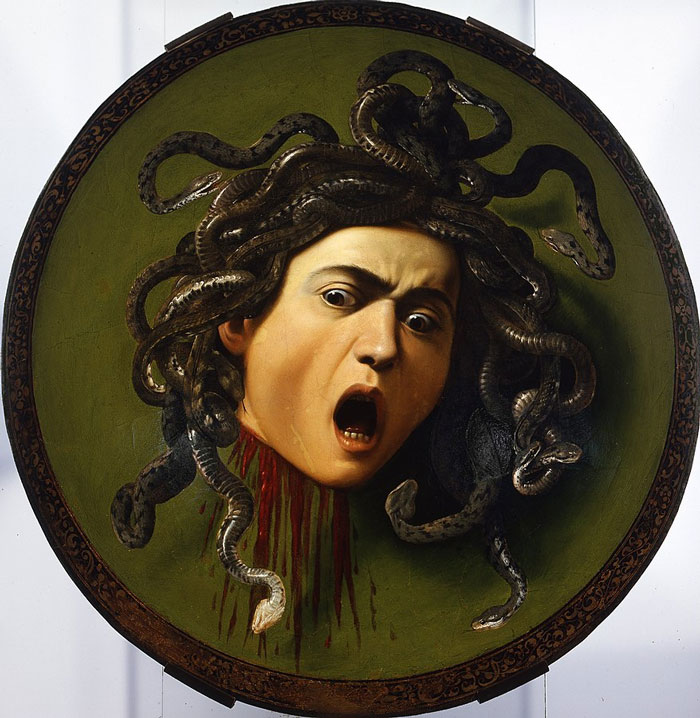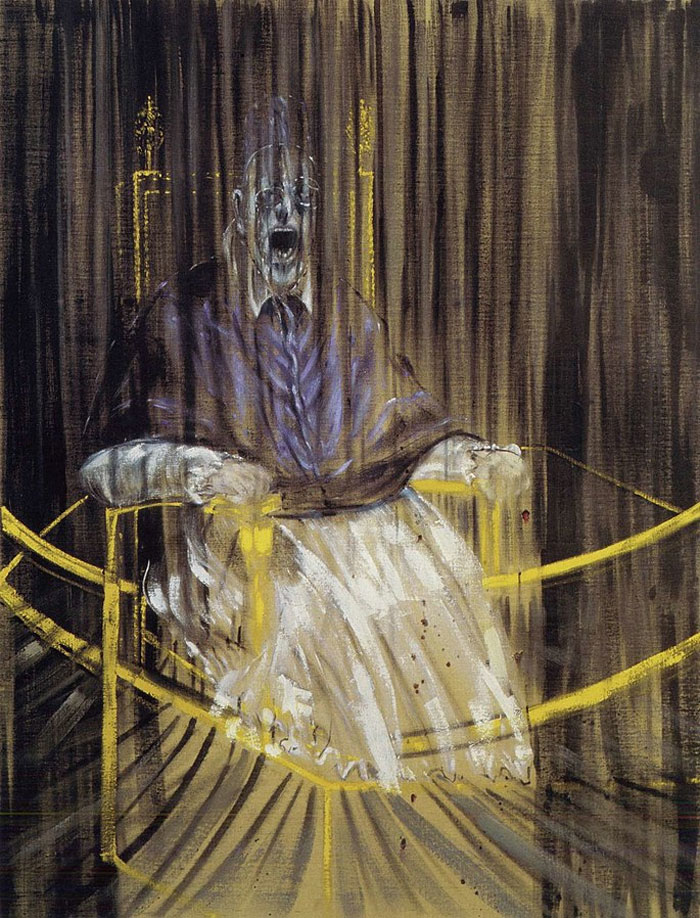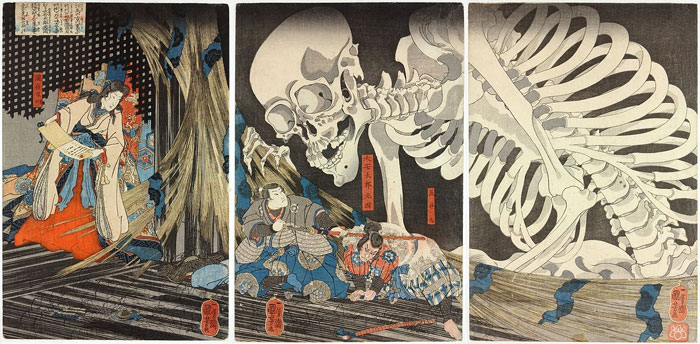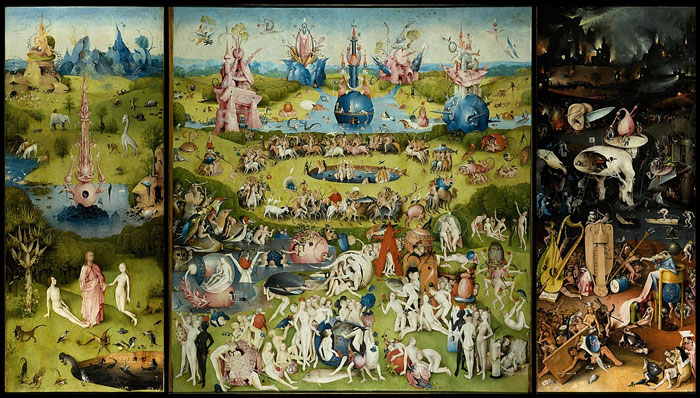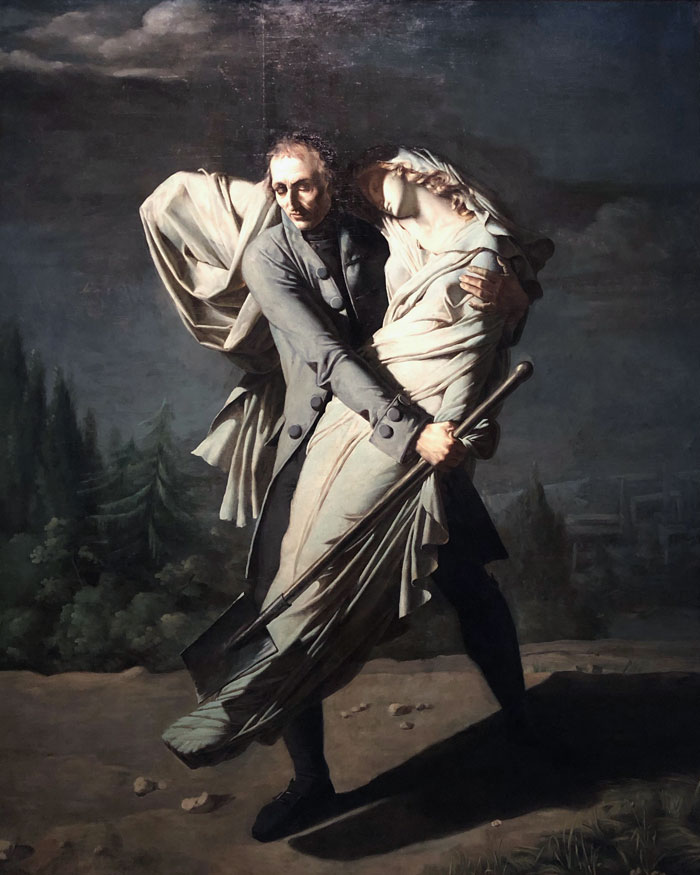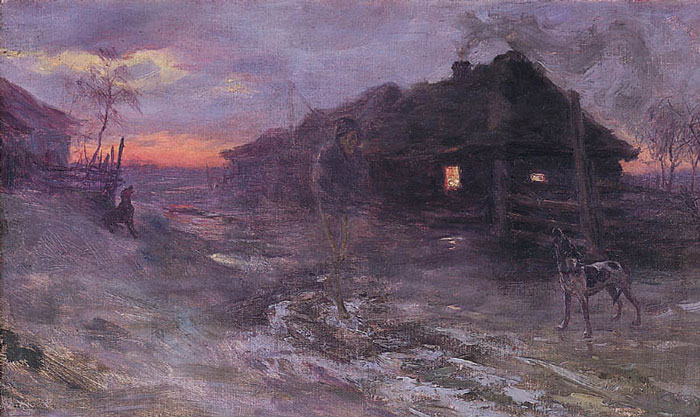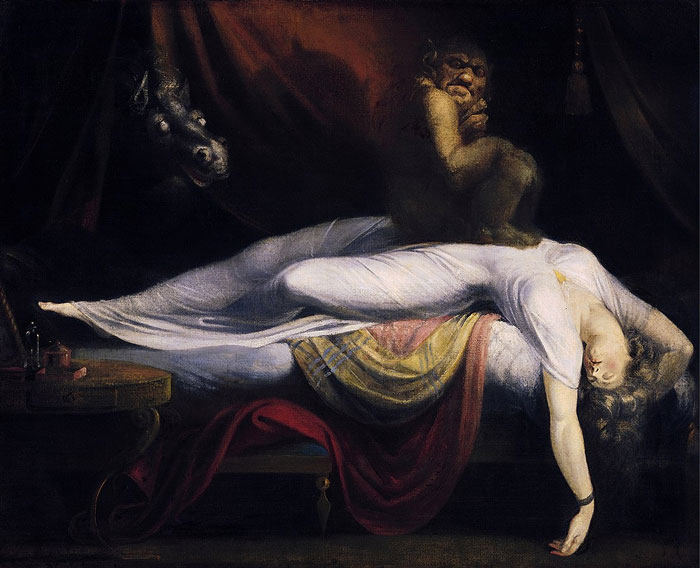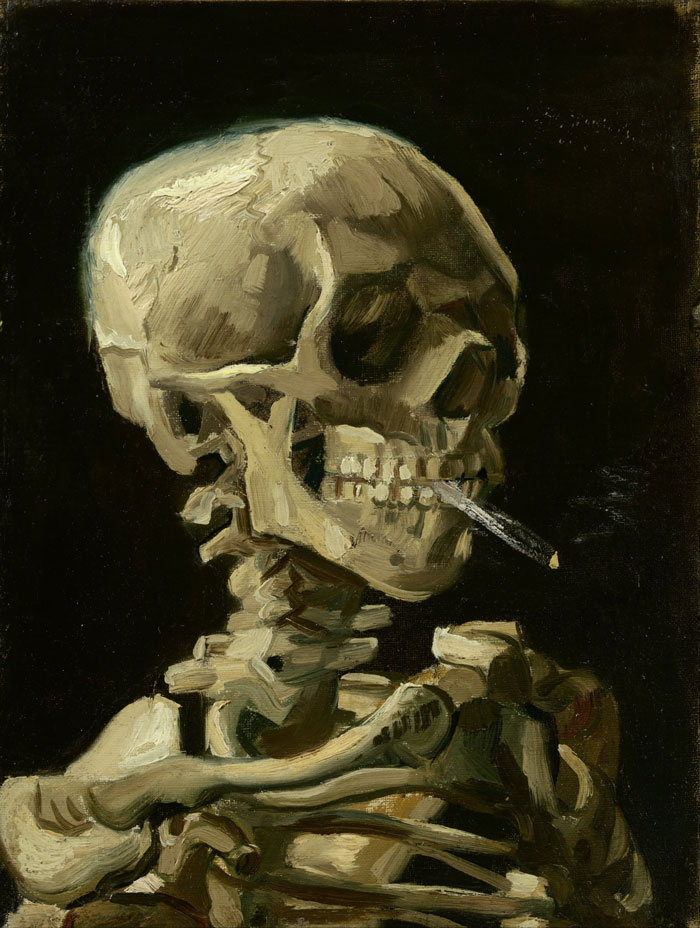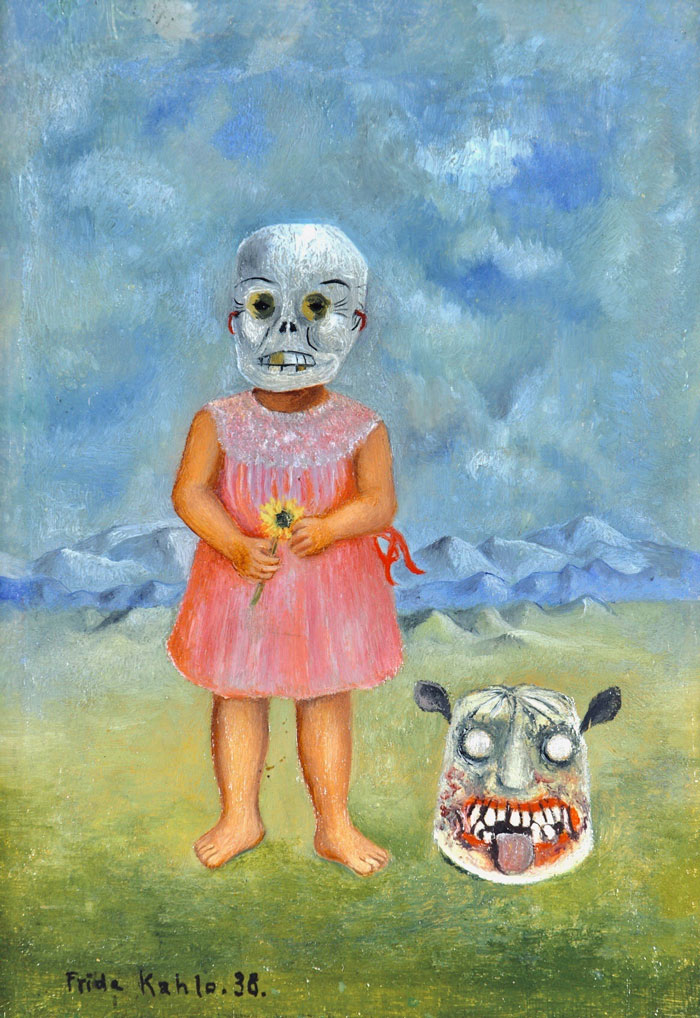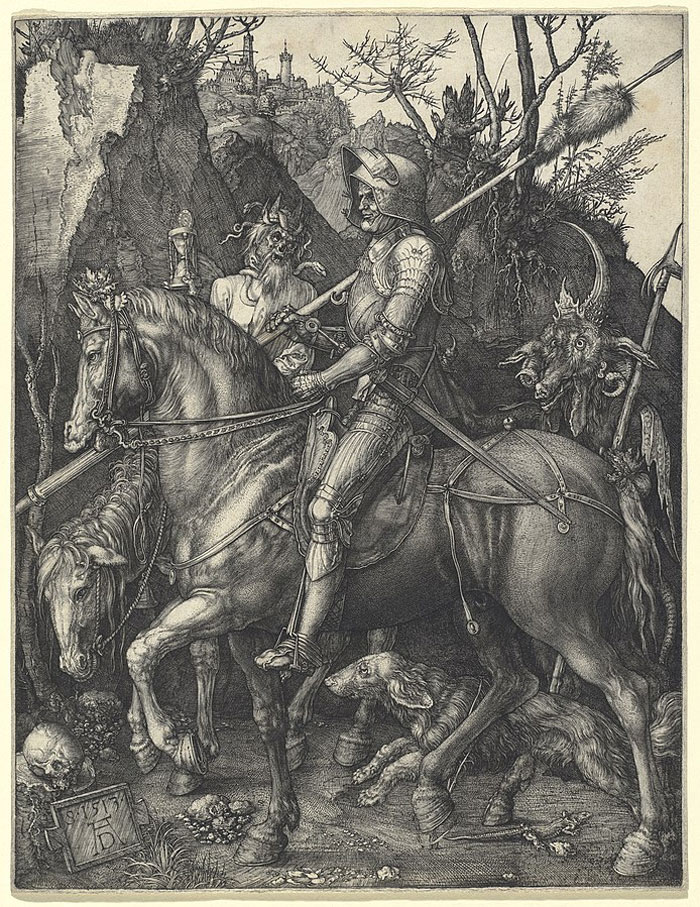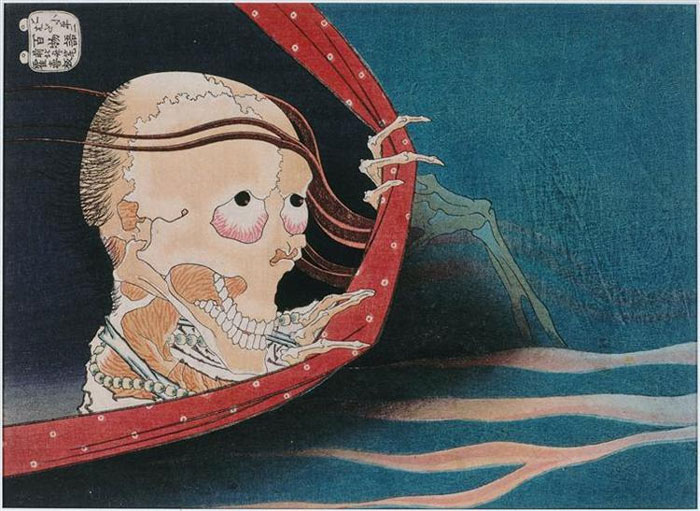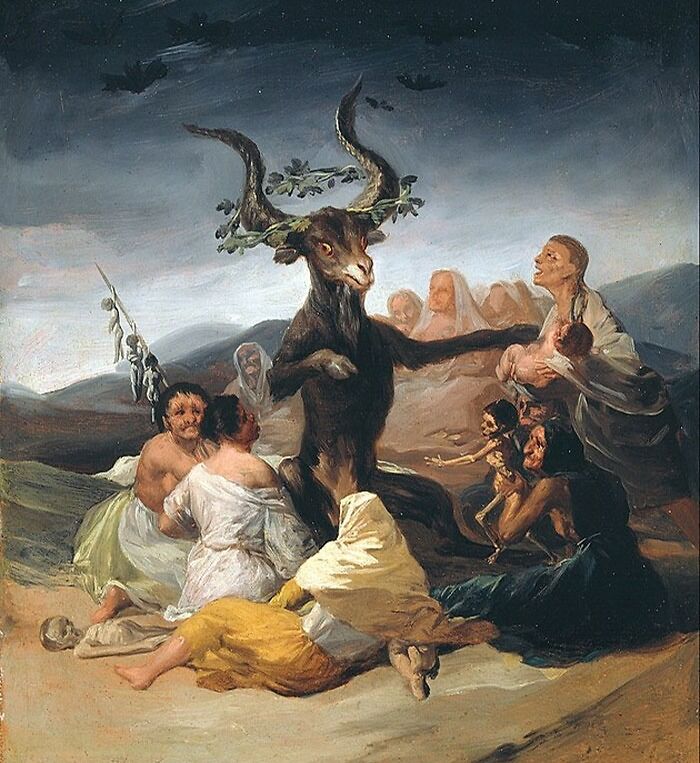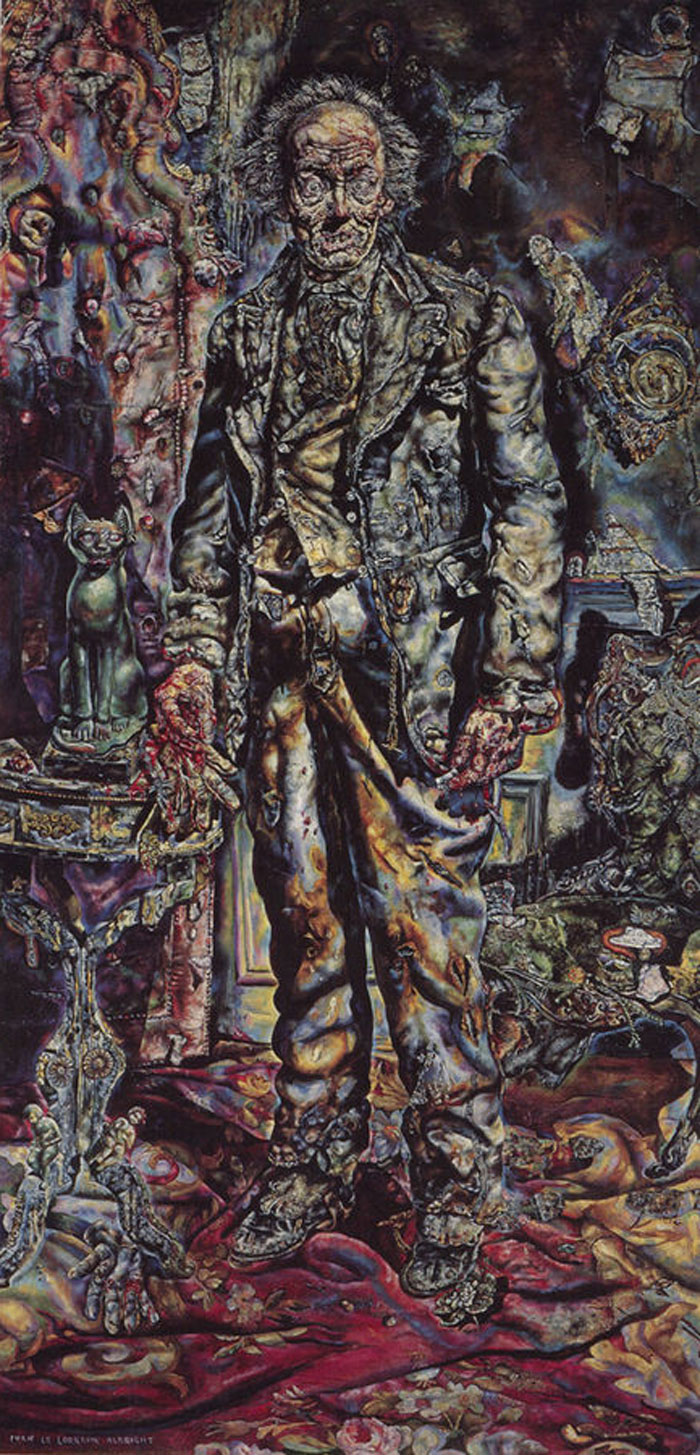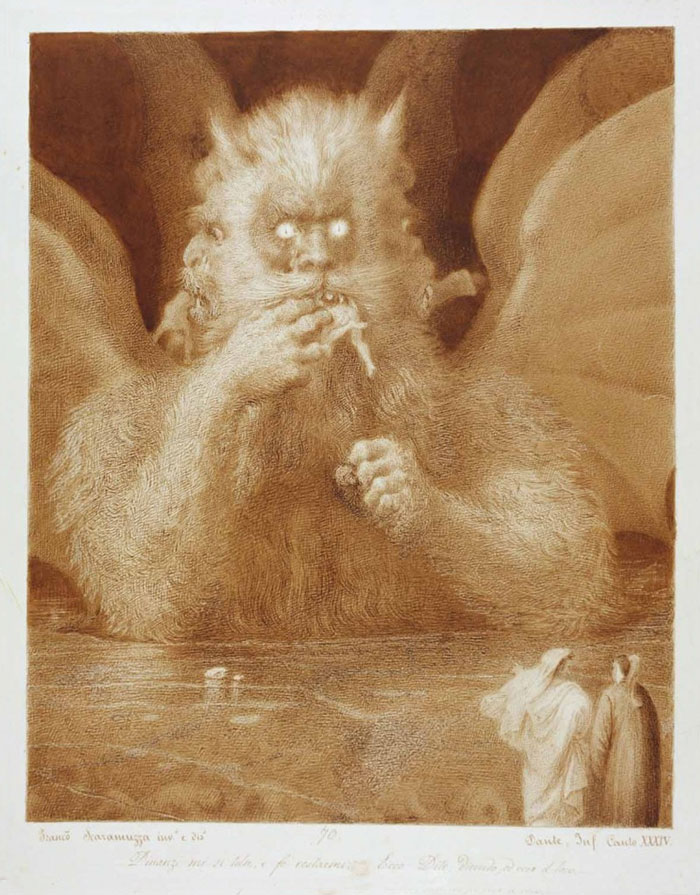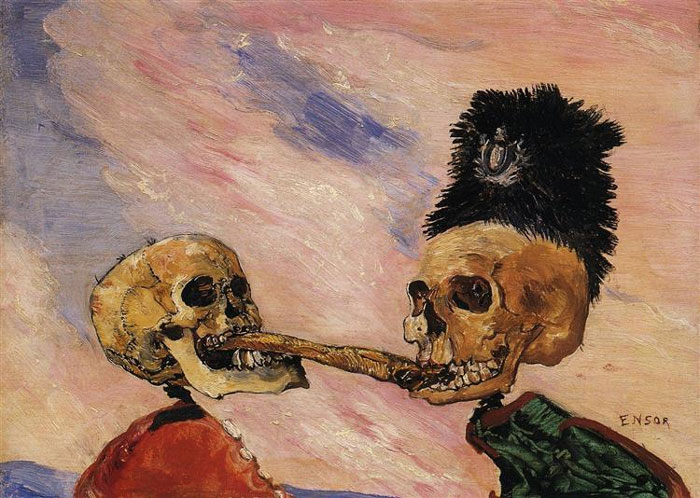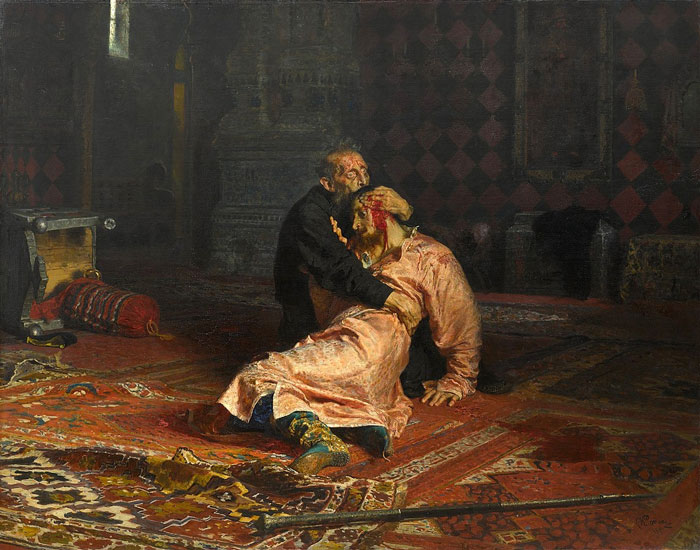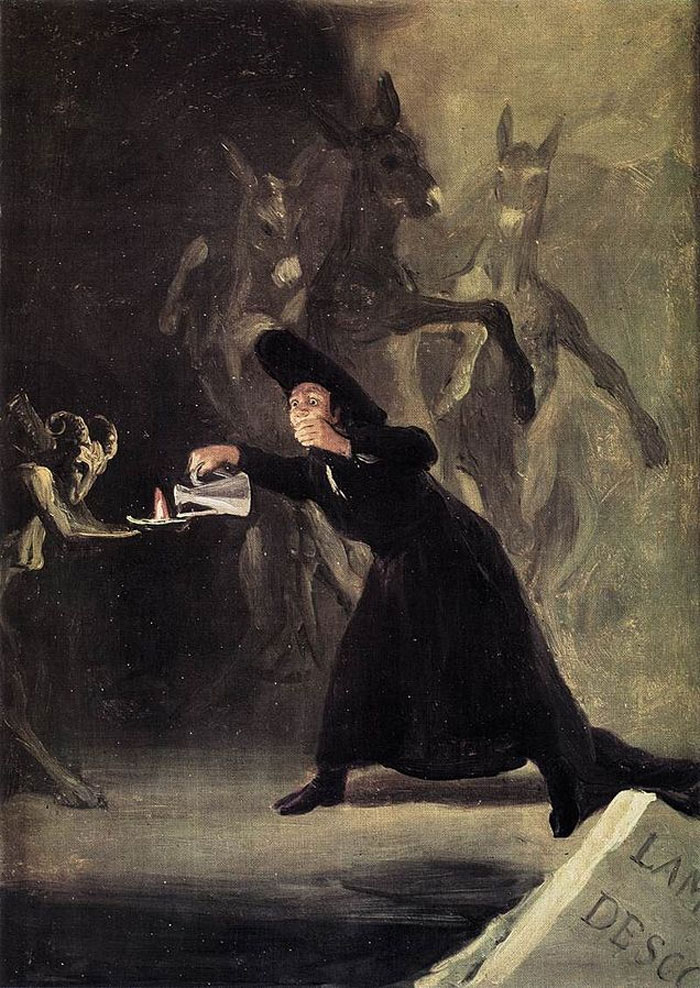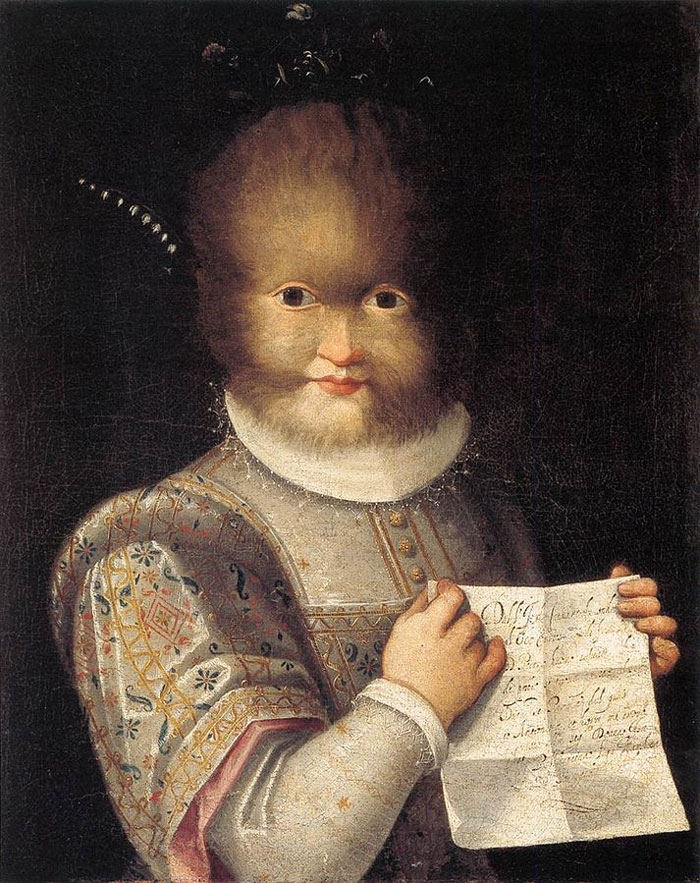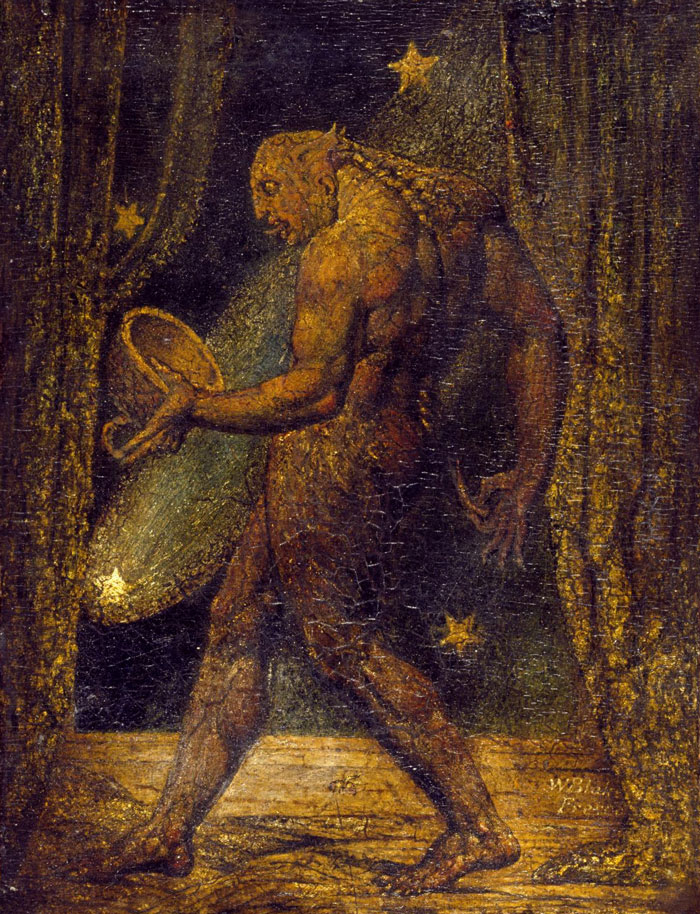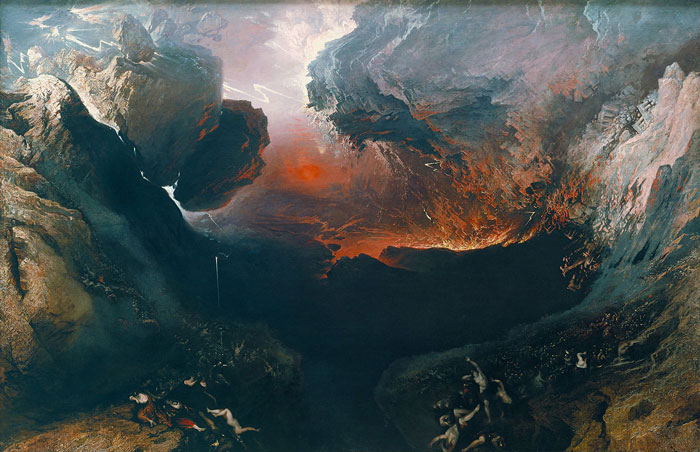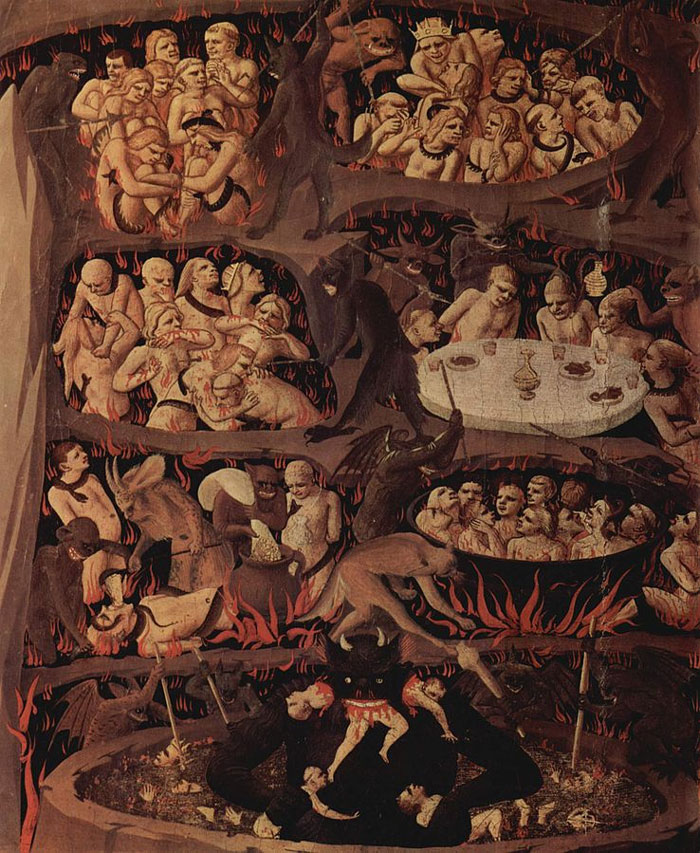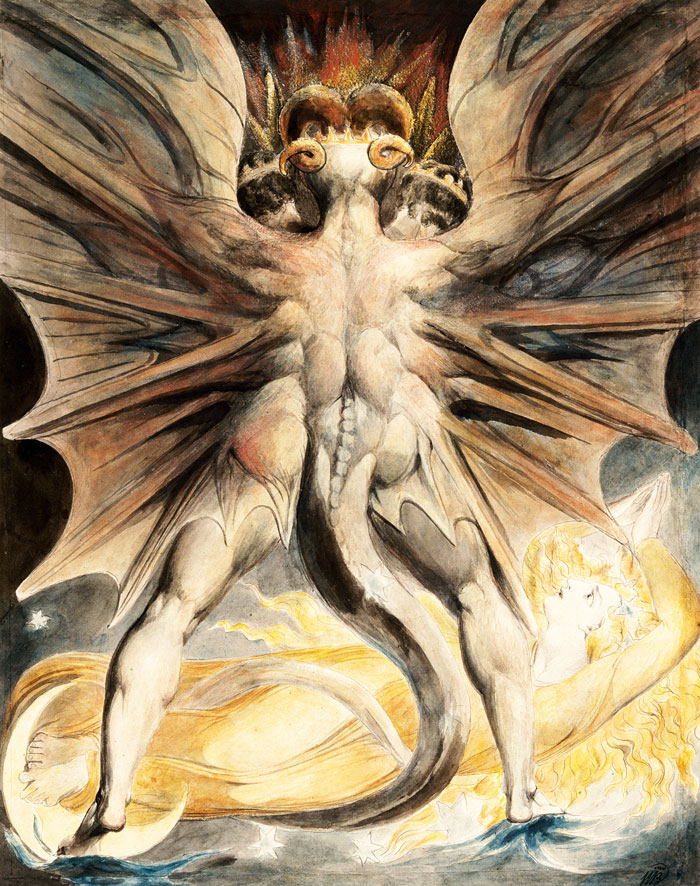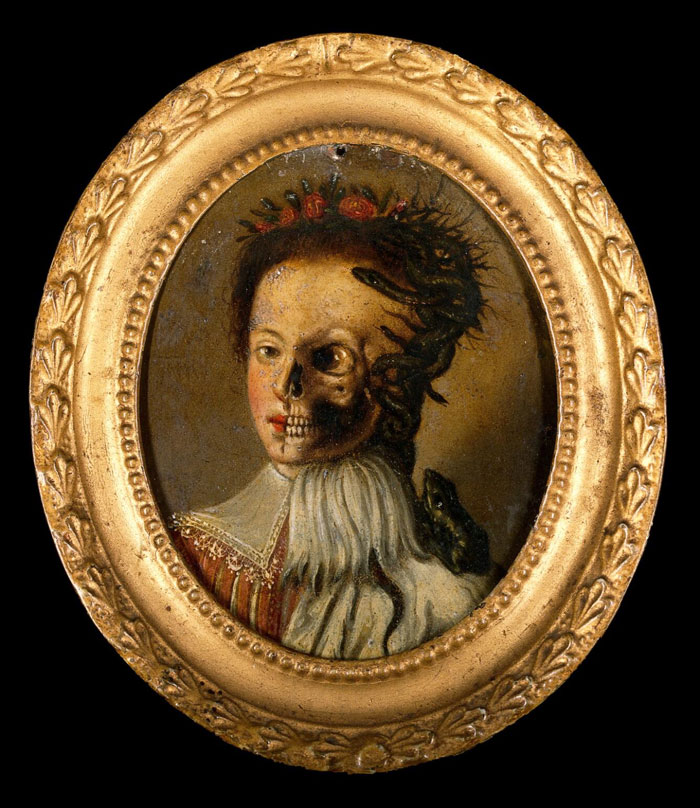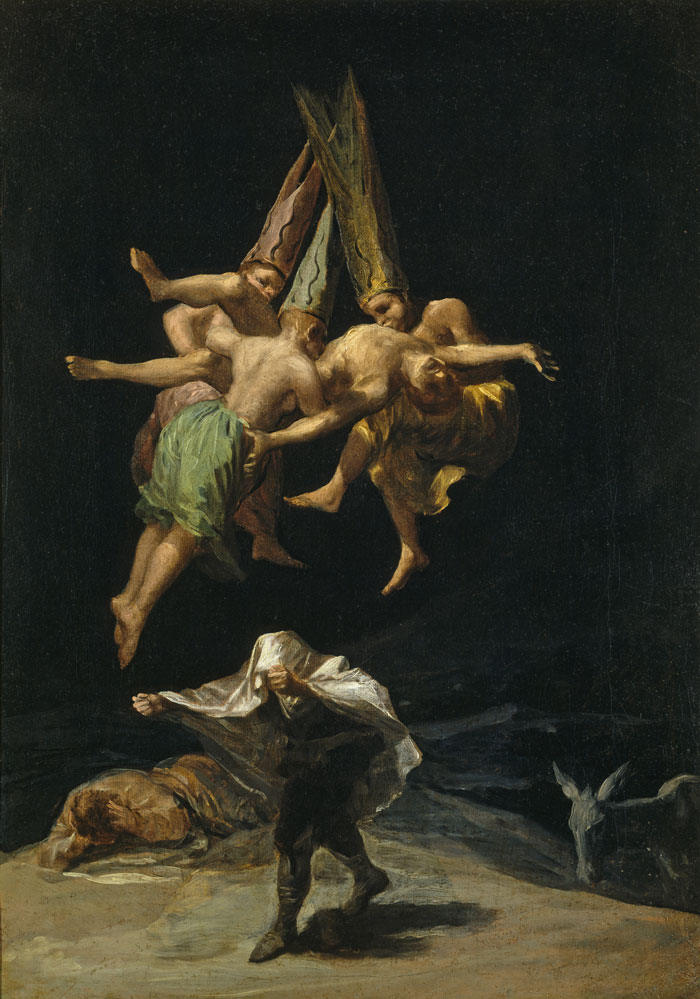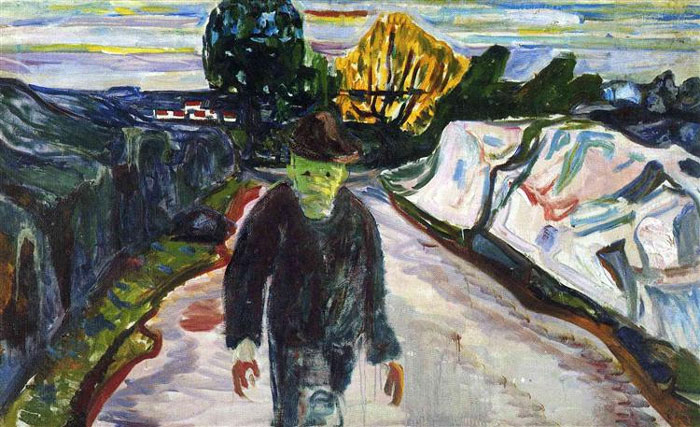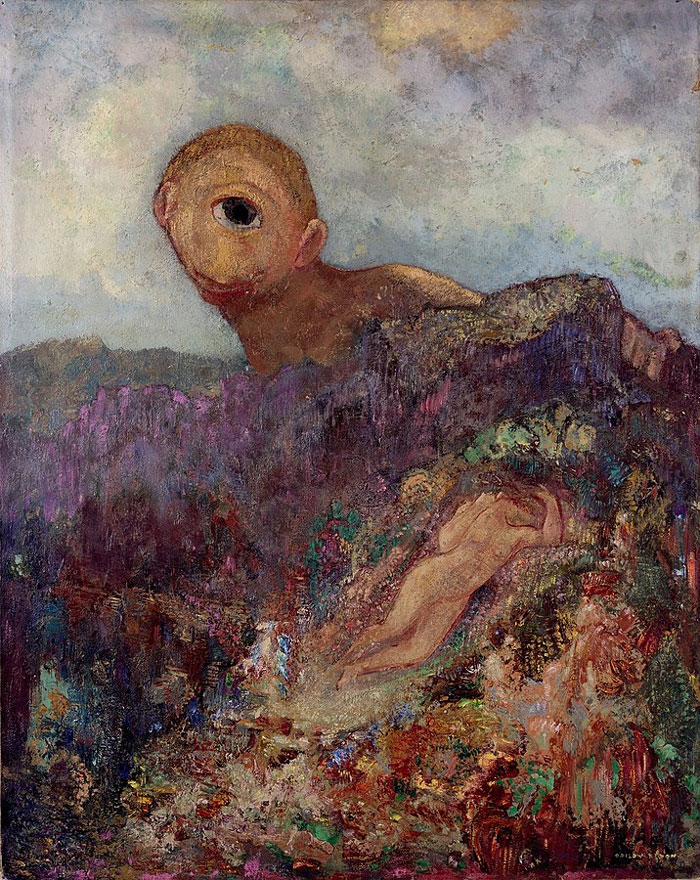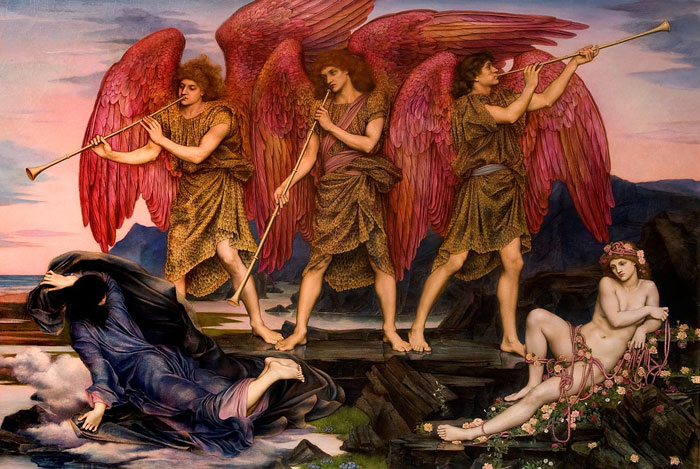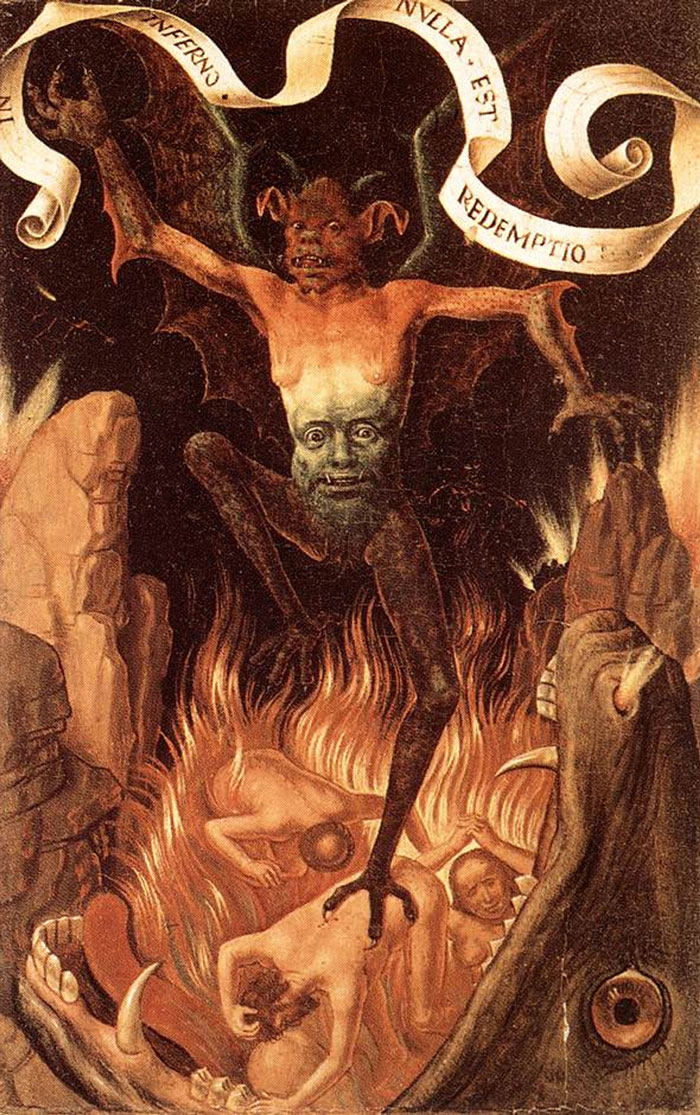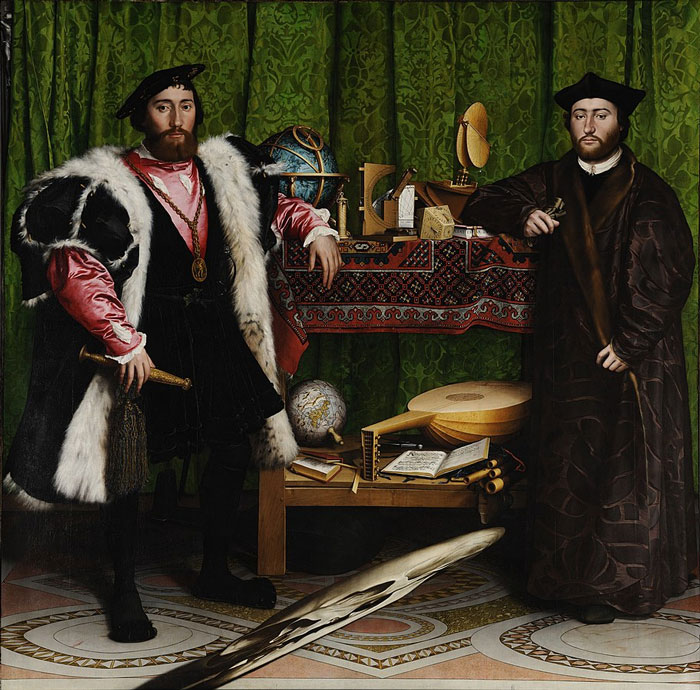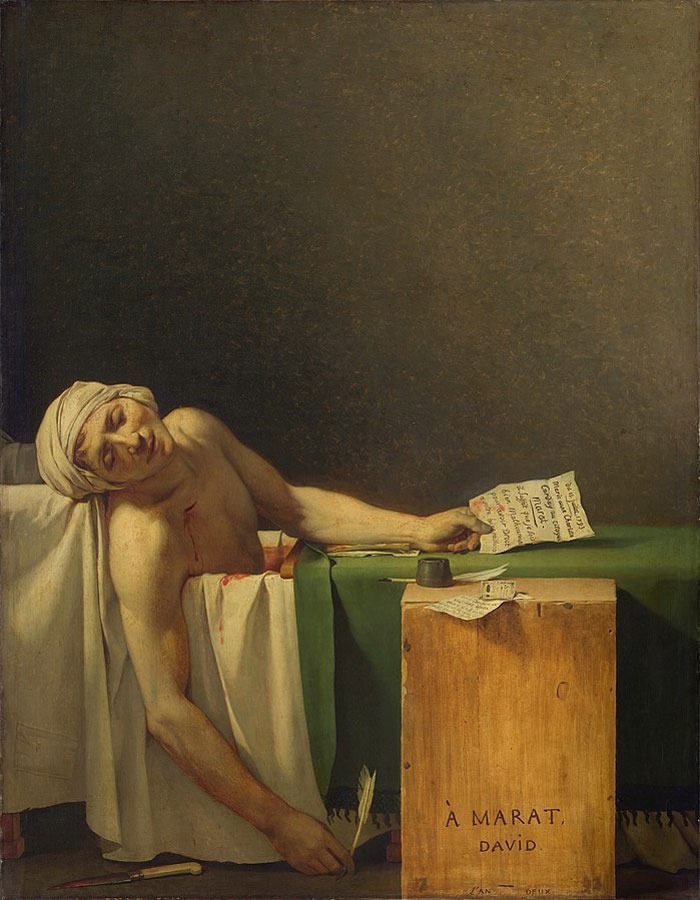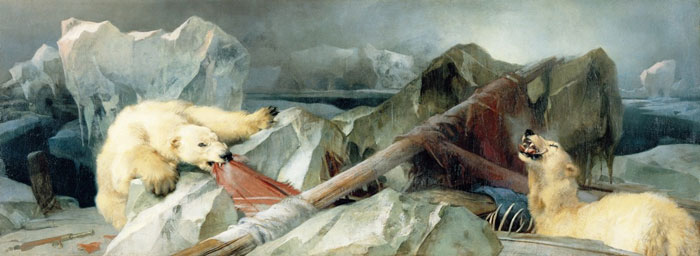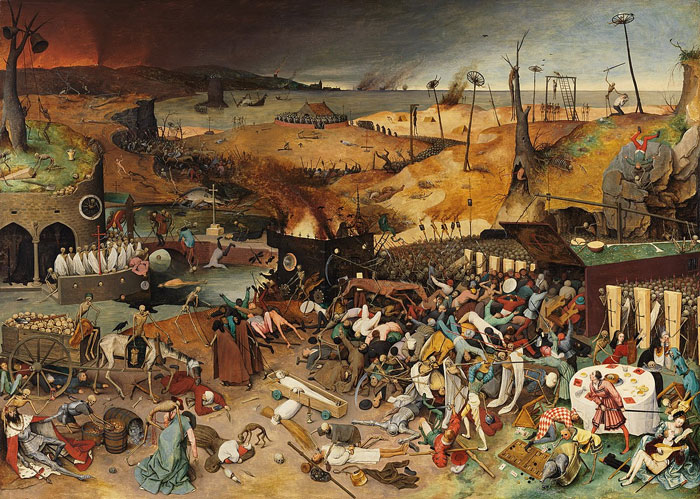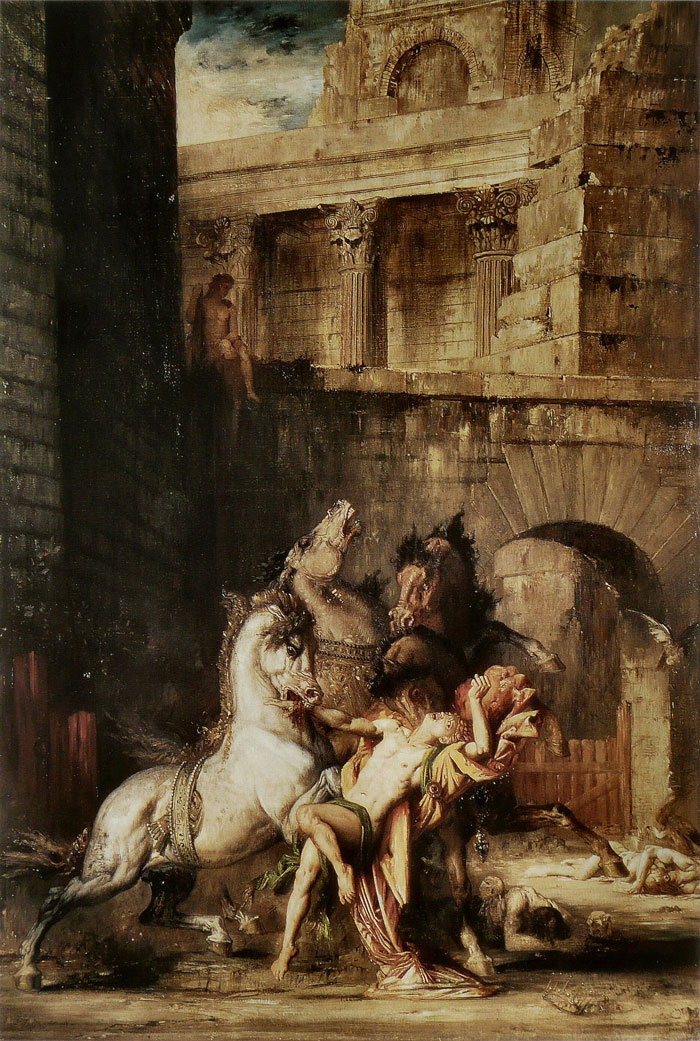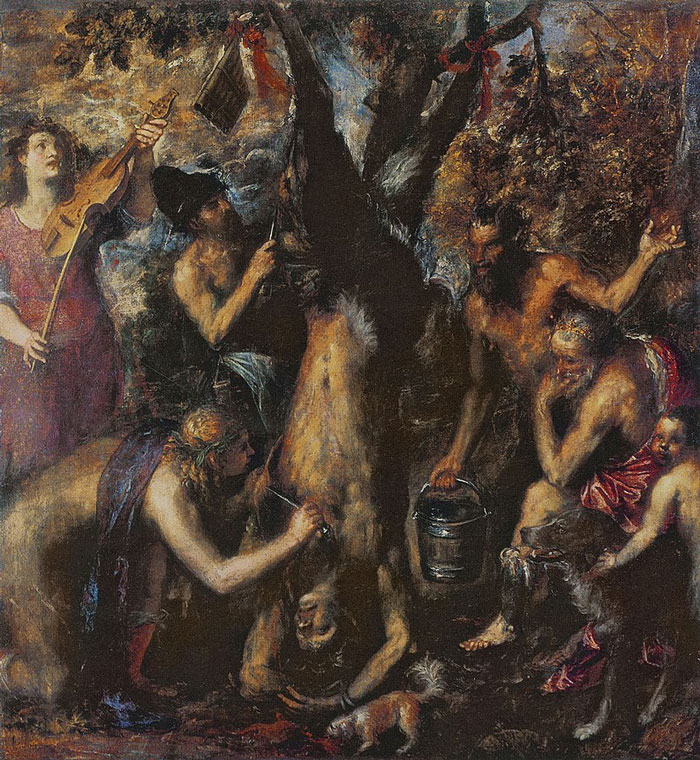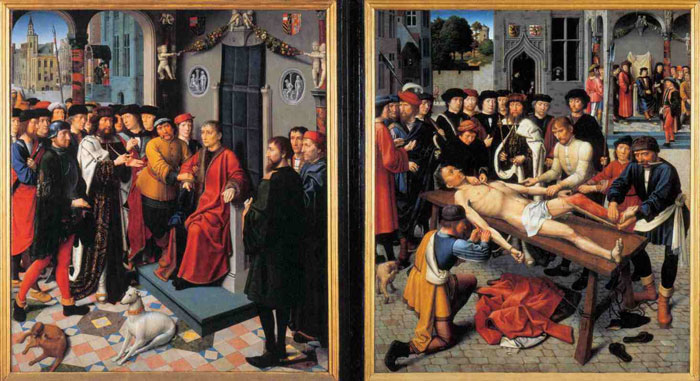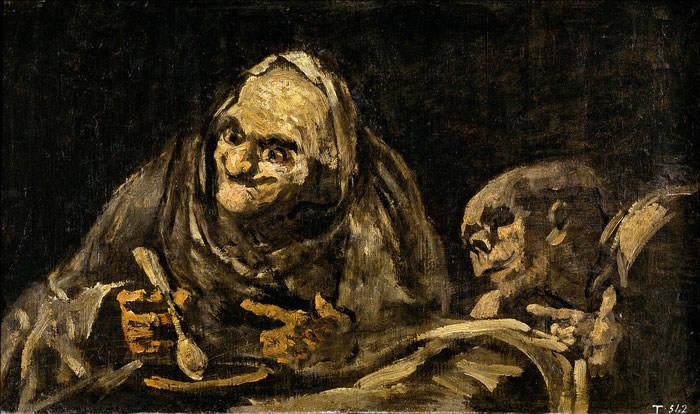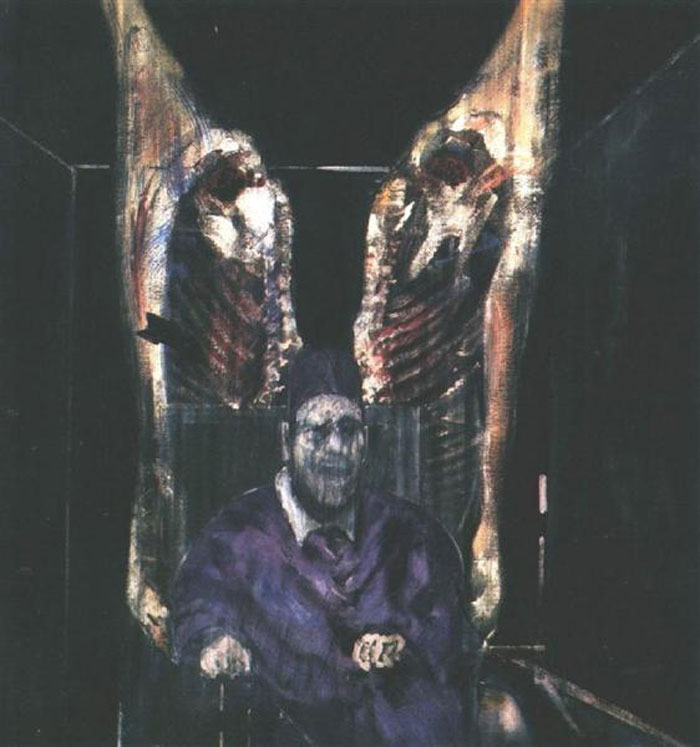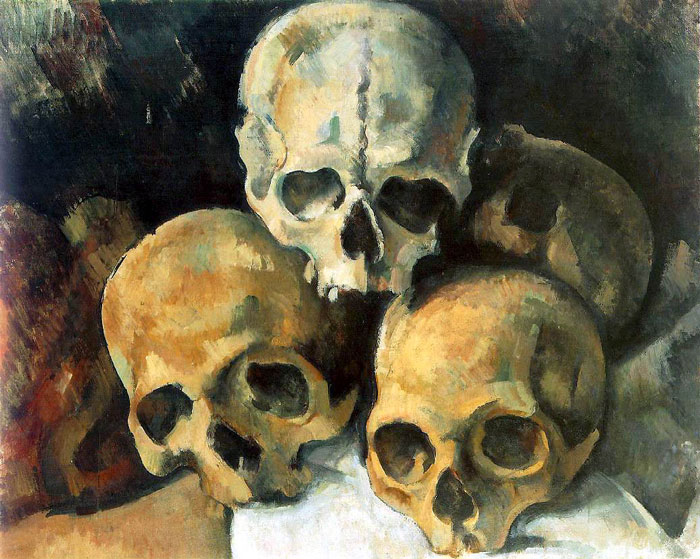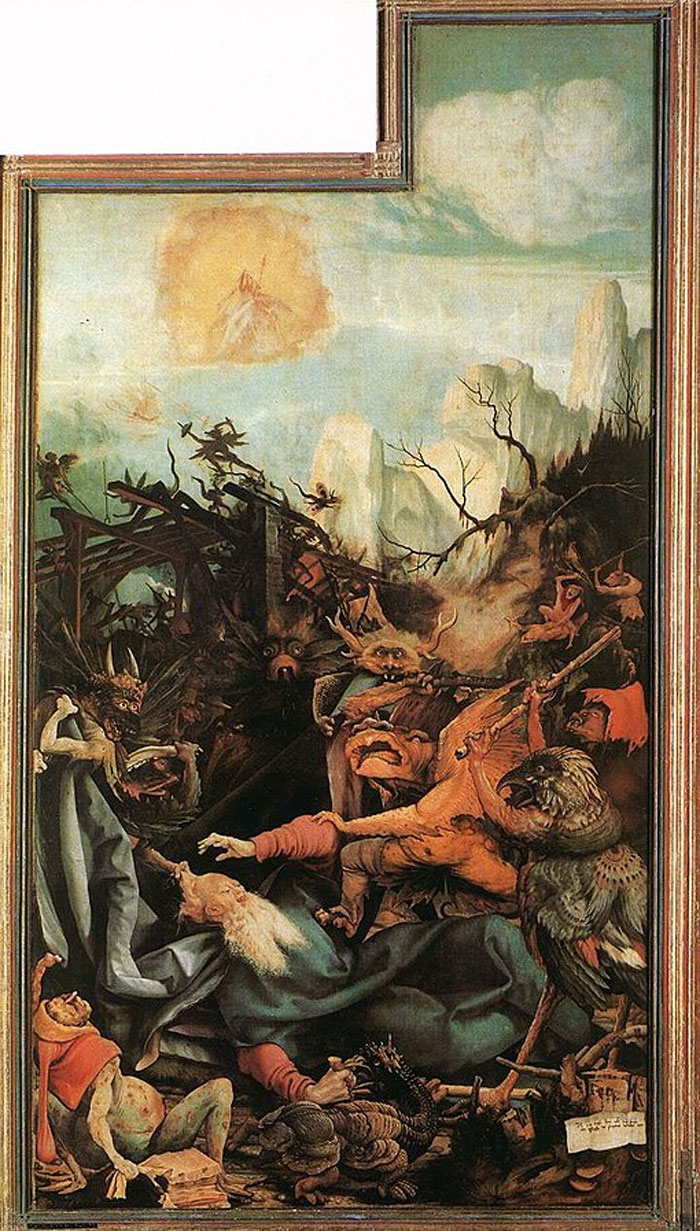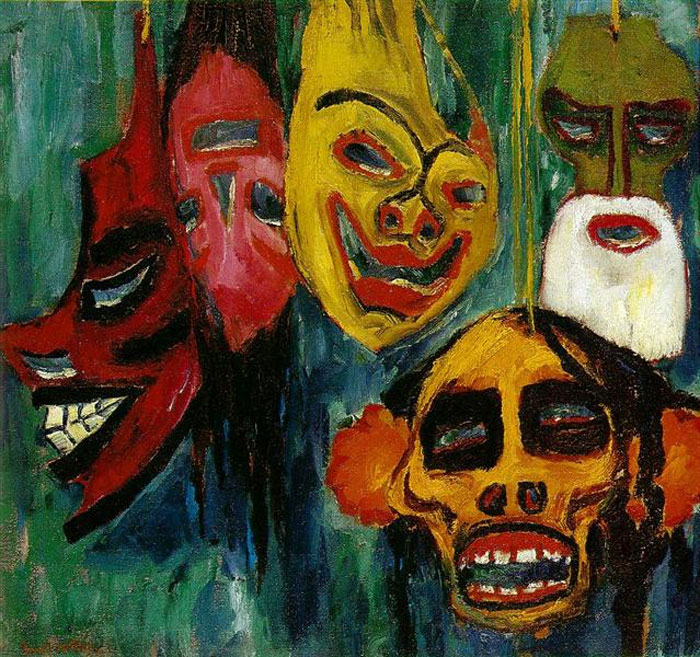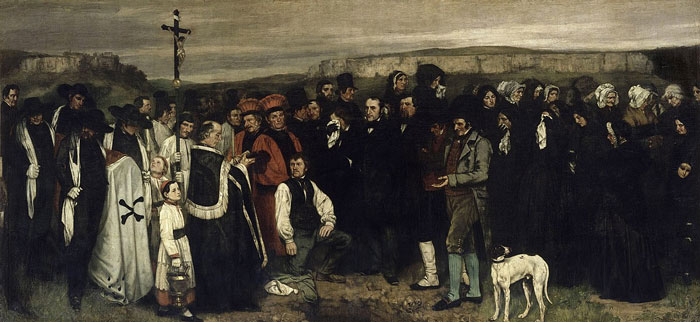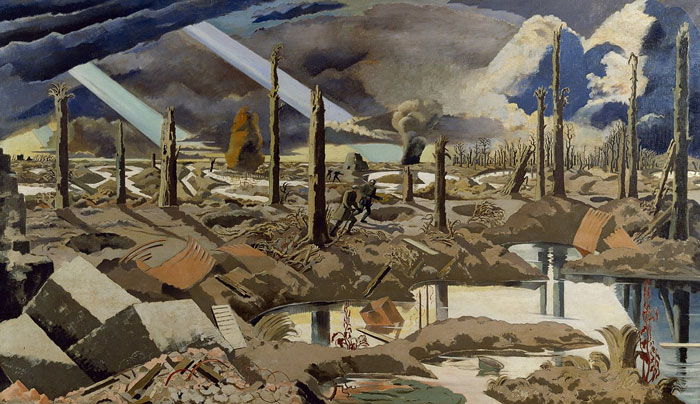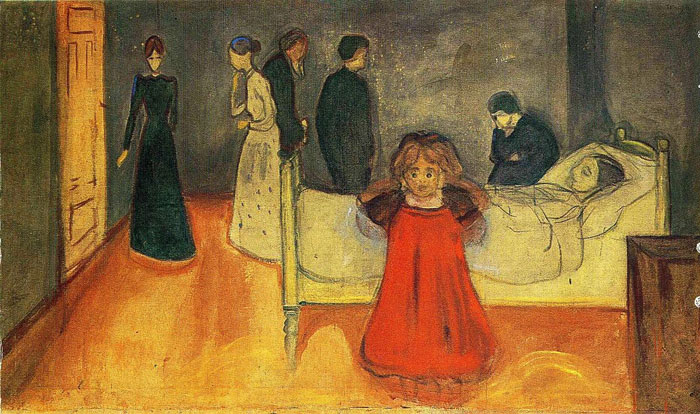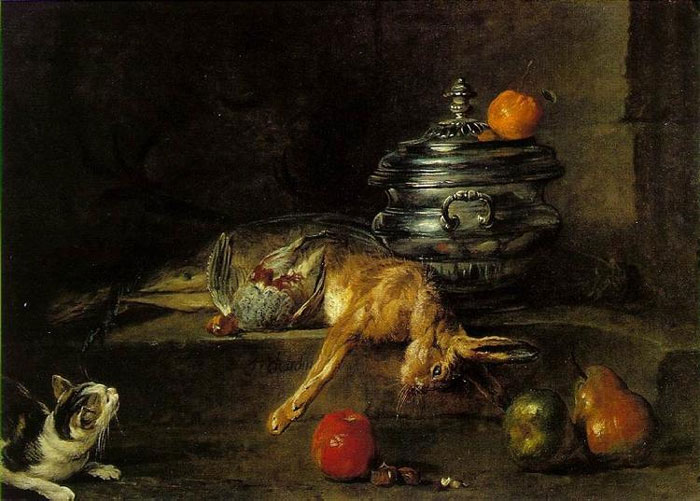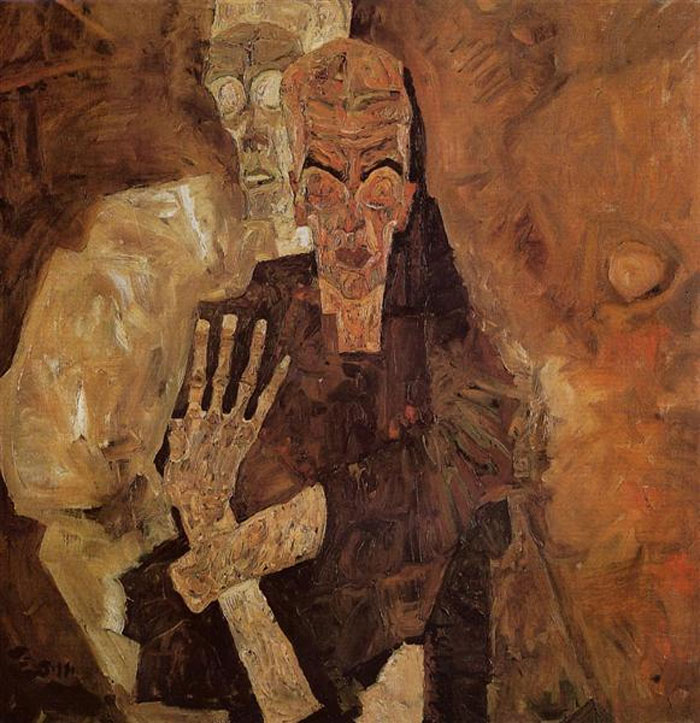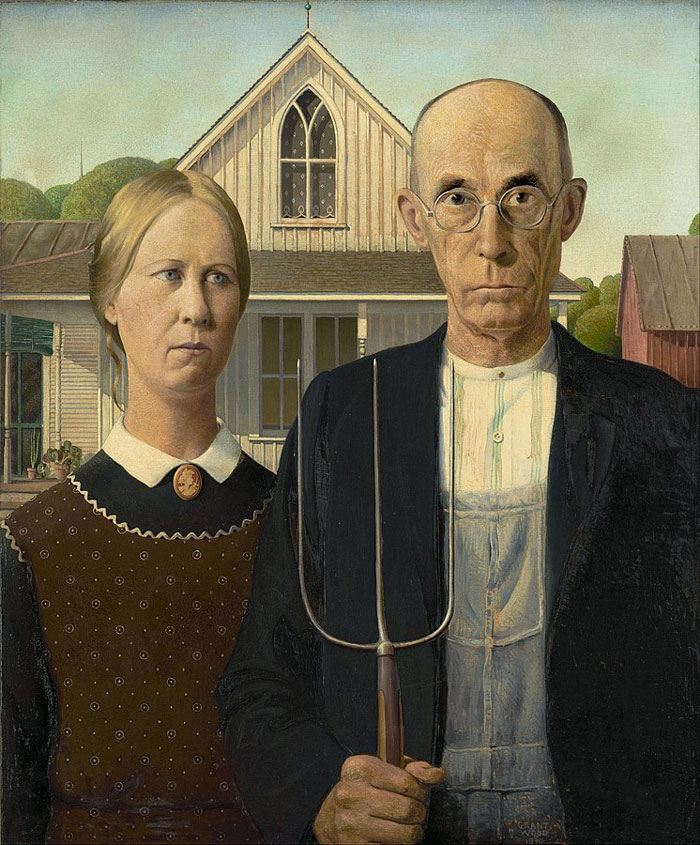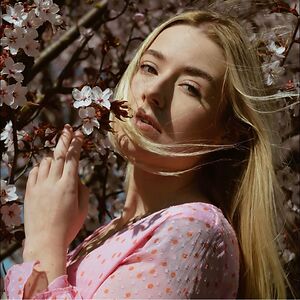When it comes to horror, we often refer to a genre of literature or film, but not so often to paintings. However, a big part of art history is actually built on morbid art and rather disturbing and scary paintings, many of which belong to the period of 'rebirth.' The Renaissance saw not only the making of some of the most famous paintings in art history but also numerous creepy paintings depicting the inherent darkness of the human condition.
While plenty of drawings and paintings from medieval times could be deemed frightening or disturbing, the most well-known examples of scary artworks depicting ominous, macabre themes were made during the Renaissance. Renaissance painters were finally liberated from strict Christian doctrine, which dominated people's lives and subjects portrayed in art. Although biblical scenes were still a common painting subject during the period, artists could explore other themes such as mythology, history, portraiture, and practice realism.
Following the 'rebirth' of art, the notion that artworks convey the feelings of the artist first surfaced with Romanticism and then continued with Expressionism, both related through the interest in themes of darkness, fear, and melancholy. Likely the first image that pops into one's mind thinking of a scary painting is The Scream (1893) by Edvard Munch, one of the best-known examples of Expressionist art. And indeed, this rather scary artwork depicting a panic-stricken creature resulted from Munch's emotional turmoil as he grappled with trauma and mental illness during his lifetime.
Below, we've compiled a list of dark paintings and creepy art that illuminate the darkness of society and human nature. While the scary art of the time might not make you jump out of your skin, this collection of scary paintings is sure to thrill both art enthusiasts and fans of the horror genre. Also, let us remind you that the order of the list is entirely up to you, so make sure to upvote those scary paintings you would like to see higher on the list!
This post may include affiliate links.
The Smiling Spider
Artist: Odilon Redon | Year (completed): 1887 | Periods: Symbolism
The creatures of Odilon Redon's noirs, or "black things," as Redon himself affectionately refers to his charcoal drawings and lithographs, are equally terrifying and fascinating. They include smiling spiders, cyclopes, grotesque animals, and plants with human heads. In the painting above, there's a spider with ten legs as opposed to its usual eight, who dances sideways while grinning mischievously. While The Smiling Spider is an amusing work of art, art historians and critics have debated its exact meaning and interpretation for many years simply because the noirs are all enigmatic. This is because Redon himself was responsible for their composition and meaning. Redon had a keen interest in science, natural history, and the emerging fields of psychiatry and dreams. The invisible world made apparent by the microscope particularly fascinated him. In The Smiling Spider, Redon merges his fascination with science with his dreamy realm. The outcome contains a distinctive trait of noirs - a combination of the surreal and the realistic.
Untitled
Artist: Zdzislaw Beksinski | Year (completed): 1984 | Style: Surrealism
Zdzislaw Beksinski produced numerous works over a long career in various fields of art, including sculpture, photography, graphic arts, drawing, and painting. Interestingly, Beksinski left all of his paintings untitled as he didn't want them to be interpreted metaphorically. In fact, Polish horror artist Zdzislaw Beksinski is the reason the Dystopian Surrealism genre became popular. Beksinski's dystopian paintings reflect his love of Gothic and ominous Baroque art. The hallmark of dystopian art is an imagined place or circumstance where things seem unpleasant or dreadful.
The Abbey In The Oakwood
Artist: Caspar David Friedrich | Year (completed): 1810 | Periods: Romanticism, German Romanticism
This large eerie picture illustrates how Friedrich used his artistic abilities to depict concerns related to everyday life. Barely seen in the center, several people enter the abbey carrying a casket. The artist attempts to evoke a sense of time passing by depicting a person's demise. There is an air of coldness in the vicinity. A smashed window with no glass left behind may be seen among the abbey's ruins. What is evident is that, unlike man's transient creations, nature persists forever. The Abbey In The Oakwood ultimately examines the human condition. The surroundings take on metaphysical implications and highlight how brief our existence is compared to the eternal and natural timelines. It's a horrific masterwork that perfectly portrays the unappealing themes of Romanticism.
Medusa
Artist: Caravaggio | Year (completed): 1597 | Period: Baroque
Both of Michelangelo Merisi da Caravaggio’s depictions of Medusa, one from 1596, named after poet Gaspare Murtola, and the other from 1597, show the precise moment when Perseus slew her. Caravaggio toys with the idea by swapping Medusa’s face with Perseus’ to demonstrate his resistance to her terrifying gaze. The painting is seen to go well with Caravaggio’s particular fascination with brutality and reality due to its odd and complicated style. Apparently, Cardinal del Monte commissioned Caravaggio to paint two versions of Medusa to rival Leonardo da Vinci’s earlier depiction of her. Unfortunately, da Vinci’s Medusa is lost. Thus we can never know how closely Caravaggio’s rendition matched up with da Vinci’s.
Study After Velázquez's Portrait Of Pope Innocent X
Artist: Francis Bacon | Year (completed): 1953 | Style: Expressionism
In 1649, Pope Innocent X commissioned Velázquez to paint his portrait. Many artists and critics deem Portrait of Innocent X the finest portrait ever created. Velázquez, however, did not flatter his subject or try to showcase him in a better light. The Pope's portrait is renowned for its realism. It honestly portrays a highly educated, cunning, but aging man. Despite seeing it just once, Francis Bacon used Velázquez's painting as the source material. It’s important to note that Bacon never painted from life and preferred to use various visual sources, such as commissioned and found paintings. In Study After Velázquez's Portrait Of Pope Innocent X, Bacon could paint the Pope in an even less favorable manner than Velázquez did. In Bacon's interpretation, the Pope is depicted screaming, but the enclosing draperies and the deep, dark colors seem to "hush" his voice. The dark background hues give the picture a horrible and nightmare-like tone. Bacon's response to why he kept returning to Velázquez's portrait was that he had nothing against popes and was only looking for "an excuse to use these colours."
Takiyasha The Witch And The Skeleton Specter
Artist: Utagawa Kuniyoshi | Year (completed): 1844
Kuniyoshi, renowned for his renderings of historical and mythical scenes, merged the two when he portrayed Takiyasha, a princess from the tenth century, calling forth a skeletal apparition to frighten Ōya no Mitsukuni. The princess in the picture utters a spell from a handscroll that summons a huge skeleton. It rears out of the shadows, using its skeletal fingers to smash through the tattered palace blinds and threaten Mitsukuni and his companion.
The Garden Of Earthly Delights
Artist: Hieronymus Bosch | Year (completed): 1505 | Period: Northern Renaissance
The crux of the painting shows an unrestrained, wildly imaginative romp. However, Bosch’s main point - and the elaborate, cunning symbolism that drives it - is unquestionably more complicated. A lot is going on, and multiple sittings at the painting may not be enough to analyze the whole picture. It’s replete with sin, punishment, and hell themes. Few pieces of art better capture the crazed thrill and bizarreness of lust than Hieronymus Bosch’s The Garden of Earthly Delights. A cluster of naked people can be seen in one place, intertwining and devouring a giant, juicy strawberry. Others sway rapturously from something resembling clumsy reproductive organs and seed pods about to explode. Fruits are picked, clear blue water flows directly into the mouth, open clam shells and plump nectarines are strewn about. More than 500 years later, it’s hard to distinguish a single message left by the author. Some people thought it was about how mankind fell into sin and lust, ultimately meeting their own demise in hell. Some believe it was painted with moralistic and religious motives. Whatever the reason, Hieronymus Bosch’s triptych, known to modern audiences as The Garden of Earthly Delights, and arguably his most puzzling work, gives a graphic portrayal of the anxieties that characterized medieval life.
Young Holding His Dead Daughter In His Arms
Artist: Pierre-Auguste Vafflard | Year (completed): 1804
Pierre-Auguste Vafflard displayed this stunning picture of love and death at the Salon in 1804. Here, fatherly love is what prompts poet Edward Young to struggle yet continue to carry his deceased daughter's body in the cold moonlight. It is now known that this scene was based on a real-life conflict between beliefs involving Young's evacuation of his deceased daughter, who was eighteen at the time, to Lyon's Swiss cemetery after being turned away from the Catholic cemetery because she was a Protestant.
Premonition
Artist: Henryk Weyssenhoff | Year (completed): ~1893
Interestingly, there's not much information available about Henryk Weyssenhoff or his artwork, and little analysis has been made to examine his works. Premonition, or originally Przeczucie, one of his most recognized works, is believed to have been created around 1893. The artwork seems to portray a ghostly-looking Grim Reaper standing in the center of the picture in what appears to be a quiet village or a farmstead. In the painting, there are also two dogs who appear to be howling at the presence of Death.
The Nightmare
Artist: Henry Fuseli | Year (completed): 1781 | Period: Romanticism
In The Nightmare, a demonic-looking incubus is crouched on the woman’s chest while she lies in profound sleep with her arms and head hanging off the end of the mattress. The figure on the woman’s chest is frequently referred to as an imp or an incubus, a kind of spirit that is purported to sit on individuals while they sleep or even engage in sexual activity with sleeping women. The woman may be merely dreaming because Fuseli’s artwork is suggestive yet vague. Nevertheless, the incubus and the horse (which allegedly was not present in the drawing but added to the painting later) from her dream seem to take dreadful physical shape. The Nightmare’s jarring blend of morbidity, eroticism, and horror has ensured its enduring fame. The Nightmare became a symbol of Romanticism and a representative example of Gothic horror. It inspired numerous authors, including the poet Erasmus Darwin (Charles Darwin’s grandfather), Mary Shelley, and Edgar Allan Poe.
Skull Of A Skeleton With Burning Cigarette
Artist: Vincent Van Gogh | Year (completed): 1886 | Periods: Post-Impressionism, Realism
This painting is thought to have been painted in the winter when van Gogh attended the Royal Academy of Fine Arts in Antwerp, Belgium, to study drawing and painting. He reportedly had several disputes with different teachers throughout his time in the academy due to his unorthodox artistic approaches. Thus, it is possible that Skull of a Skeleton with Burning Cigarette was created as a piece of an anatomy study in which students learned to draw skeletons. Some believe van Gohn painted it to make fun of the academic establishment. Others claim it might have been a "Memento Mori," and that it may have been motivated by the passing of his father.
Girl With Death Mask
Artist: Frida Kahlo | Year (completed): 1938 | Influenced by: Abstract expressionism, Fantastic art, Postmodern art
This painting by Frida shows a young girl wearing a skull mask, who is believed to be Frida herself when she is four years old. This particular style of face covering is customary at the yearly Mexican holiday called the "Day of the Dead," where death is honored rather than grieved. The young girl is portrayed clutching a yellow blossom in her hands, similar to the tagete bloom that Mexicans place on graves during the "Day of the Dead." She is by herself as she stands on a vast, deserted plain beneath a dark sky. Another mask of a carved wooden tiger is placed by her feet. Both masks appear inappropriate for the weak and vulnerable 4-year-old and serve as reminders of her tragic fate.
Knight, Death And The Devil
Artist: Albrecht Dürer | Year (completed): 1513 | Period: Northern Renaissance
This exquisite engraving by Albrecht Dürer invites viewers to consider their inevitable mortality. A lot is happening in the picture. The skeletal, deteriorating figure of Death sits atop his old steed. Lurking behind the knight on his mighty warhorse, the figure holds the ticking hourglass of Time. Death and the knight are shown close to each other, implying the knight’s impending death. Although this soldier appears to be prepared for battle, no amount of armor will be able to save him (and the rest of mankind) from death, even though he displays no outward signs of fear or temptation by the devil, who is right behind him. The viewer can also spot a lizard, sometimes considered a sign of impending danger, who darts to the right, and a skull, a symbol of death, lying on a tree stump in the left foreground.
The Phantom Of Kohada Koheiji
Artist: Katsushika Hokusai | Year (completed): 1831 | Period: Ukiyo-e
The subject of this eerie print from the One Hundred Ghost Stories series, actor Kohada Koheiji, is believed to have lived in Edo during the end of the Edo Period. It's thought that his wife had an affair and plotted to have him assassinated along with her lover. Koheiji turned into a ghost and followed them. Apparently, he slayed his wife, and her boyfriend went insane and committed suicide. In Hokusai's creepy print, the deceased actor Kohada Koheiji is portrayed like a zombie with his skin and hair still hanging from his skull in the skeleton image.
Witches' Sabbath
Artist: Francisco De Goya | Year (completed): 1798 | Style: Romanticism
Witches' Sabbath depicts the devil as a goat surrounded by a coven of deformed, elderly, and young witches in a desolate moonlit setting. The goat is crowned with an oak leaf wreath and has big horns. An elderly witch is holding a malnourished baby. Although widespread superstition held that the devil frequently preyed on infants and fetuses of humans, it appears that the devil is serving as the priest during the child's initiation ritual. Two child skeletons may be seen, one lying on the ground to the left and the other cradled by a crone in the foreground. Goya's artwork has been interpreted in a Spanish context as a protest against individuals who defended and implemented the principles of the Spanish Inquisition, which participated in witch-hunting in the seventeenth century.
It gives the sense of this “devil” creature trying to restore life to the infants, because the woman with baby he’s touching seem revitalized and joyous, and the women in the background have a happy aura. The foreground women with the skeleton babies look like they’re in line almost, waiting for their turn to receive the creature’s blessing. Idk wtf is going on with the hanging babies in the distance on the left though 😰
The Picture Of Dorian Gray
Artist: Ivan Albright | Year (completed): 1943 | Style: Magic Realism
This grisly, hallucinogenic, almost trippy painting was created by Ivan Albright for the Oscar-winning film adaptation of Oscar Wilde's 1891 novel The Picture of Dorian Gray. For those unfamiliar with the novel, in Wilde's story, Dorian Gray commissions a painting of himself as a handsome young man and later exchanges his soul for an eternally youthful appearance. As the still-attractive Gray follows a more sinister and terrible life, his painted likeness rots and decays, exposing the depth of his moral depravity. Albright was selected by the film's director, Albert Lewin, to create the horrifying depiction of Gray because of his notoriety as a painter of the macabre. Although the movie was shot in black and white, Lewin chose to highlight Gray's startling metamorphosis by filming the painted portrait in color.
Lucifero
Artist: Francesco Scaramuzza | Year (completed): 19th Century | Period: Romanticism
There's little information known about the painting or the artist who painted Lucifero. Francesco Scaramuzza was an Italian painter and poet who lived during the Northern Italian Romantic era. He mainly created mythological and historical works of art. Still, he is best renowned for his interpretations of literary figures such as Dante, a project to which he devoted decades of his life. The artwork above depicts Lucifer from Dante's Inferno.
Skeletons Fighting Over A Pickled Herring
Artist: James Ensor | Year (completed): 1891 | Style: Expressionism
In Skeletons Fighting over a Pickled Herring, the artist, Ensor himself, is depicted as a "pickled herring" being pulled between two critics, representing the peculiar, gothic style for which Ensor became best known. The comical scene visualizes how he is being ripped apart by art critics after receiving negative comebacks to his work. Ensor's flamboyantly scary masks and skeletons, which he painted in a bright palette, provided the ideal vehicle for parodying bourgeois life.
Ivan The Terrible And His Son Ivan On November 16th, 1581
Artist: Ilya Repin | Year (completed): 1885 | Style: Realism
The painting depicts a troubled Ivan the Terrible, the Tsar of Russia, cradling his dying son, the Tsarevich Ivan Ivanovich, shortly after he struck his son fatally in a fit of rage. The older Ivan's agony and guilt are depicted in the artwork, along with the tenderness of the dying Tsarevich, blood flowing down the side of his face, and a lone tear on his cheek. This is by far Repin's most psychologically intense work. After Alexander II was assassinated, Repin began considering painting this historical incident. He painted this piece to recollect past violent incidents in Russian history and demonstrate his opposition to violence and bloodshed.
The Bewitched Man
Artist: Francisco De Goya | Year (completed): 1798 | Style: Romanticism
With dancing shadows and lamplight, the painting has a spooky, ghostly feel to it. The devil is depicted offering the lamp to the priest Don Claudio. Don Claudio is portrayed filling the lamp with oil as eerie horses can be seen in the distance standing on their hind legs. The subject can be seen experiencing intense mental anguish and torture as he believes he is bewitched and his life depends on keeping a lamp alight.
huh, nice to see a Goya painting in a "scary paintings" list that Isn't "Saturn Devouring His Son" for a change. "The Spell" is another good one if you're into art with creepier context.
Portrait Of Antonietta Gonzalez
Artist: Lavinia Fontana | Year (completed): 1595 | Style: Mannerism (Late Renaissance)
Lavinia Fontana portrayed Antonietta, the younger daughter of Pedro Gonzalez. Pedro Gonzalez, or as he was called, the “hairy guy from Munich,” was the father of the girl in the painting and is also regarded as the first documented case of the congenital condition known as “Ambras Syndrome,” or the so-called “Werewolf syndrome,” which causes hair to grow on the face and the entire body. Antonietta, her father, and three other siblings suffered from this condition. Gonzalez’s family’s story is the first instance of this illness to be documented in Europe.
How is this scary? This is just a painting of a little girl who happened to suffer from a condition that in no way was her fault. Really disrespectful to place this in this list imo.
The Ghost Of A Flea
Artist: William Blake | Year (completed): 1820 | Period: Symbolism
Characteristic of Blake, the painting depicts one of his dark and terrifying visions. Blake thought that bloodthirsty men's souls resided in fleas. In this painting, he shows one of these spirits: a muscular figure gazing enthusiastically into an empty cup with bulging eyes and a protruding tongue. According to Blake, a spirit with such a craving for blood had to be contained within the size of a flea. Otherwise, all of humankind would be doomed. The figure in Blake's painting appears ready to rip out of its cracked paint skin in pursuit of more blood and gobble up all of humanity.
The Great Day Of His Wrath
Artist: John Martin | Year (completed): 1851
The depiction of the Last Judgment in the book of Revelation, the last book of the New Testament, served as the inspiration for a triptych of “judgement pictures,” of which this artwork is a part. Martin’s apocalyptic vision in The Great Day of His Wrath closely resembles the biblical account; there was a great earthquake, the sun became black as a sackcloth of hair, and the moon turned into blood. The heaven then vanished like a scroll, and every mountain and island was displaced from their locations. The world collides with itself, emphasizing the futility of humankind’s efforts to contest God’s will.
The Last Judgment
Artist: Fra Angelico | Year (completed): 1435 | Period: Early Renaissance
Fra Angelico's The Last Judgment consists of several panels. One of the most macabre is Hell. In the painting, one can see the devilish souls of the wicked being tortured by the Demons of Hell. At the very bottom, Satan is seen grasping onto two and chewing on three of the damned souls.
The Great Red Dragon And The Woman Clothed With The Sun
Artist: William Blake | Year (completed): 1810 | Period: Symbolism
Between 1805 and 1810, William Blake created a sequence of watercolor works known as The Great Red Dragon. During this time, Blake received commissions to produce more than 100 paintings for use as Bible book illustrations. In the artwork above, Blake depicts "a woman clothed with the sun, and the moon under her feet," and "a great red dragon, with seven heads and ten horns." The terrified lady, who stands in for the Virgin Mary, Israel, and the church, is being attacked by the dragon, a symbol for Satan, as she prepares to give birth to a son. Interestingly, this image became well recognized in modern popular culture only when it appeared on the back of a serial killer played by Ralph Fiennes in the 2002 film Red Dragon.
Red Dragon is the prequel to Silence of the Lambs, the book is much better than the film. This is the image that inspired Thomas Harris to give his villain his tattoo
Life And Death
Artist: unknown | Date: unknown
This young person, whether a man or woman, dressed in attire from the Italian 17th century, has death eating away at their face. The contrast of the bright cheeks and sunken hollows with the exposed teeth and the crimson lips creates a disturbing and sorrowful impression. Although very little is known about the painting, neither its age nor the author, it's likely that it was heavily influenced by the vanitas painting style.
The Witches’ Flight
Artist: Francisco De Goya | Year (completed): 1798 | Period: Romanticism
In the famous De Goya painting, three witches wearing high pointed hats, called corozas, hold a fourth stripped man figure in the air while another lies on the ground with his ears covered. The man held hostage has his head thrown back and his arms outstretched as if he is trying to escape. The three witches appear to be biting or kissing his body. The sixth figure is seen running with a white cloth over his head. The Duke and Duchess of Osuna purchased six paintings by Goya in 1798 to decorate their country home in La Alameda. This particular painting was one of the six. They are all related to the etchings from his Caprichos series, where he displayed scenes of witches and witchcraft. However, Witches' Flight has often been perceived as a criticism of the church's authority rather than a critique of witchcraft. Goya may have wanted to convey that the 'holy' men hunting the witches were equally as evil as their target, as the figures below overlook the nude man being tormented in the name of religion.
The Murderer
Artist: Edvard Munch | Year (completed): 1910 | Period: Expressionism
A rather eerie painting is Edvard Munch's depiction of The Murderer in 1910. Especially interesting is the selection of skin color for the subject. While there is not much analysis done on the painting, the choice of green is rather intriguing as the color is usually associated with nature and liveliness, contradicting the title of the artwork.
Le Cyclope
Artist: Odilon Redon | Year (completed): 1914 | Period: Symbolism
With this intimate, lucid portrayal of the Greek Gods' realm, Redon has created a masterpiece of symbolist art. In this painting, the Cyclops Polyphemus watches the sleeping Nereid Galatea, a sea nymph, from behind a sizable mountain. However, Galathea loved the river god Acis. Thus, the one-eyed giant's love remained unrequited. The painting's most noticeable feature is the cyclops' abnormally large eye. In Redon's artwork, the eye frequently represents the human soul and the mysterious, unexplored inner world as an all-powerful, independent entity. The unusually vivid colors serve to heighten the threat of the giant, or more specifically, the eye, which observes the naked woman.
Aurora Triumphans
Artist: Evelyn De Morgan | Year (completed): 1876 | Movement: Pre-Raphaelite
The painting, also known as 'Dawn,' depicts Aurora, the goddess of Dawn, breaking free from the grip of night. She is in the right-hand corner, naked and covered with delicately arranged pink rose strands. Her body is white, representing virtue, spirituality, and goodness. Three trumpet-wielding, red-winged angels occupy the middle section of the artwork. In the lower-left corner, opposite Aurora, a female figure in a dark robe, Night, spins her black cloak. Symbolic feminine figures personifying Dawn, Dusk, Night, and Sleep can frequently be found in De Morgan's paintings. The artist contrasted day and night, light and dark, to depict the triumph of love, hope, and wisdom over egotism, despair, and ignorance.
Hell
Artist: Hans Memling | Year (completed): 1485 | Period: Northern Renaissance
In Memling's Hell, the conflict between Good and Evil lies at the center of its iconography. The androgynous demon is depicted clawing at the woman's back, symbolizing lust and vanity. The text in the ribbon above states In inferno, nulla est redemptio, meaning that "There is no redemption in Hell."
The Ambassadors
Artist: Hans Holbein The Younger | Year (completed): 1533 | Period: Northern Renaissance
You may wonder what's so scary about the painting above. It's the hidden symbolism of it. Painted in the grand style of the Northern Renaissance and the later Vanitas paintings of the 17th century, the portrait is rife with hidden meanings and symbolic elements. Until the observer realizes the significance of the blurred diagonal-shaped image hovering just over the floor, the artwork appears to glorify two men's (the ambassadors') accomplishments. Holbein purposefully twisted the image such that its meaning could only be understood when viewed from a high or low angle on either the right or left side. This anamorphic figure above the floor is a human skull, which serves as a timeless reminder of mortality and the essentially transient nature of human ideals. It is unclear why Holbein gave this portrait such emphasis. It is possible that he was trying to convey that no individual had the control to stop what was inevitable by emphasizing the painting's fundamental theme - that no amount of material wealth, power, or education can save death. According to some theories, the painting was created to hang in a stairway, so anyone walking up the stairs would be startled to see the skull suddenly appear to the left of the painting.
is it just me with my broken humor who finds this really funny? like the random skull that looks like it was just overlayed onto the painting and then stretched and rotated is funny to me lol
Death Of Marat
Artist: Jacques-Louis David | Year (completed): 1793 | Period: Neoclassicism
Currently located in the Musées Royaux des Beaux-Arts de Belgique, Death Of Marat reminds the people of the free press's influence and the power of words on the French Revolution. Ultimately, it's a symbol, or the image, of the French Revolution. The artwork, made in the months following Marat's passing, depicts Marat lying lifeless in his bathtub following his murder on July 13, 1793, by Charlotte Corday. Marat's body is portrayed in heroic nudity, with his body exposed in a bathtub, still holding onto a paper in one hand and the pen, a reminder of his journalistic work, about to drop from his other hand. His throat wound seems clean as if all signs of the violence have vanished. In essence, this romanticized portrayal honors Republican principles and remembers a Revolutionary martyr in the crucified position.
Man Proposes, God Disposes
Artist: Edwin Landseer | Year (completed): 1864
This artwork, which shows two polar bears viciously mauling human bones, is an imagined scene from the macabre story of Sir John Franklin's ill-fated expedition to the North-West Passage in 1845. The discovery of this route in the 19th century was crucial for British merchants and sailors as it would link the Atlantic and Pacific oceans, drastically reducing travel times and enhancing Britain's imperial influence. It might be interpreted as a reflection on the crises of British triumphalism and imperialism in the middle of the 19th century, as the image depicts mankind and civilization being beaten by "nature, red in tooth and claw." However, the macabre scene isn't the only thing unsettling about this painting. Apparently, it's believed by the students at Royal Holloway that the artwork is haunted. It derives from the legend that, while taking exams in the 1920s or 1930s, a student stabbed a pencil into their eye, wrote "The polar bears made me do it" on their exam paper, and committed suicide. According to another myth among students that has been around since at least the 1960s, anyone sitting in front of the picture during an exam will fail it.
The Triumph Of Death
Artist: Pieter Bruegel | Year (completed): 1562 | Period: Northern Renaissance
It is clear that Hieronymous Bosch had an effect on this piece of art from the profusion of scenes and the moralizing tone that Bruegel employed. During medieval times, a common motif and allegorical concept used in drama, poetry, music, and visual arts was the 'dance of death,' implying the all-conquering and equalizing power of Death. In keeping with the theme at hand, Bruegel painted the entire piece in a reddish-brown hue, giving the picture an infernal appearance. In this moral work, a desolate environment with ongoing scenes of devastation serves as the background. The destruction of living beings by a massive army of skeletons represents Death's victory over mundane things. Riding a reddish horse in the foreground, Death commands his forces as they destroy the world of the living. Every social institution is a part of this makeup; neither loyalty nor willpower can save them. Some people try to resist their grim fate, while others are willing to accept it. However, no one is exempt from ultimate demise.
The Scream
Artist: Edvard Munch | Year (completed): 1891 | Movement: Proto-Expressionism
The Mona Lisa of our time, Munch's The Scream, is a classic work of modern art. Munch captured the anxiety-ridden, unsettling nature of the modern era, much as Leonardo da Vinci did while evoking the Renaissance ideal of calm and restraint. It's acknowledged that The Scream was inspired by an actual past event from Munch's life. Apparently, he created The Scream as a response to the horror and dread he experienced one day while out for a stroll with two friends. The peaceful environment he had planned to venture into was abruptly disturbed by changes in the sky brought on by the setting sun. Since, Munch's The Scream has become a universal, timeless picture and symbol of the human condition and alienation.
ngl, I was oddly terrified of this as a child... until I came across "shocked voldemort" as an alternate name for this painting. e_e
Diomedes Devoured By His Horses
Artist: Gustave Moreau | Year (completed): 1865 | Periods: Symbolism, Modern art
The slender body of King Diomedes is portrayed as being torn apart by four wild horses. While one mare seems to be biting his wrist, the brown mare clamps her teeth into his neck. The bodies of the horses' earlier victims appear to be heaped to the right. This scenario depicts the thrilling conclusion of Hercules' eighth labor, which involved capturing the four flesh-eating horses that belonged to King Diomedes. The horses were tamed by Hercules after he killed the king in battle and fed his body to them. This mid-1800s French painting is characterized by Gustave Moreau's obsession with violent, very emotional scenes painted in jewel-like hues.
The Flaying Of Marsyas
Artist: Titian | Year (completed): 1576 | Period: Mannerism
Iris Murdoch, a novelist, once proclaimed The Flaying of Marsyas the most outstanding work of art in the history of Western culture. Not much information is known surrounding the painting. To whom the late Titian masterpiece was intended, whether it was finished (although it is signed), and whether it was changed after the artist's passing are all unknown. It illustrates Ovid's tragic narrative of the satyr Marsyas, who lost a duel with the deity Apollo in a contest and was sentenced to a horrible demise. The artwork is crammed with a large cast of creatures and people, some taking part in the horrifying, nauseating rite of painstakingly removing flesh from Marsyas’ bones while others are just contemplating. The painting appears incomplete or possibly abandoned when viewed up close, as it's incredibly messy and agitated. There's pain, passion, and brutality everywhere.
The Judgement Of Cambyses
Artist: Gerard David | Year (completed): 1498 | Period: Northern Renaissance
An ancient Persian tale claims that Sisamnes was a dishonest judge who King Cambyses had to have skinned alive to teach a lesson. Sisamnes' arraignment is seen in the left panel while Cambyses recounts the charges against him. Among other things, Sisamnes had consented to be bribed off to provide a bogus verdict. In the background, he receives a merchant on the front steps of his house. The graphic execution of Sisamnes is represented in the right panel. The diptych was commissioned around 1488 by the Bruges municipal authorities, who wanted to display "justice panels" for the town hall's deputy burgomaster's room to inspire the chief justices to constantly refrain from corruption. The Judgement Of Cambyses is one of David's few pieces that are not focused on conventional religious themes.
Two Old Men Eating Soup
Artist: Francisco De Goya | Year (completed): 1823 | Period: Romanticism
One of Francisco Goya's fourteen Black Paintings, which he produced between 1819 and 1823, is Two Old Men Eating Soup. Goya was in his mid-seventies and extremely pessimistic at this point. At that time, he was painting murals on the inside walls of the house known as Quinta del Sordo ("House of the Deaf Man"). They weren't meant to be on view to the general public. This particular artwork was likely positioned above the house's front door. Although the two old characters in the image are said to be men, it is not immediately clear what gender they are. Perhaps due to toothlessness, the left figure's mouth is drawn into a grimace. On the contrary, the second figure's face appears completely lifeless. Its eyes are dark hollows, and the head generally has a skull-like appearance.
Figure With Meat
Artist: Francis Bacon | Year (completed): 1954 | Style: Expressionism
Figure With Meat is another very unsettling painting by Irish-born artist Francis Bacon. The central figure is based on Diego Velázquez's depiction of Pope Innocent X; however, in Francis Bacon's work, the Pope is depicted as a ghastly figure sandwiched between two bisected cows. Rembrandt's still life 1655 painting Slaughtered Ox probably inspired the carcass hanging in the background. The fresh meat in Bacon's artwork is reminiscent of the extravagant displays of fruits, meats, and sweets in vanitas paintings from the 17th century, which typically contained subliminal moralizing messages about the transience of life. However, there's more to this painting than meets the eye. This horrifying painting also offers a window into the tortured mind of a real artist who tried to terminate his own life through excessive drinking, gambling, and immorality. With all that combined with a history of abuse as a child, the mind could become very troubled. You are being sucked into the black nothingness of the background by that screaming abyss of a mouth, which is framed by a hanging crucifix of meat, while you are being held captive in a steel cage. An actual house of horrors, indeed! Through his artwork, Bacon successfully conveys his distressed mental state to everyone.
Pyramid Of Skulls
Artist: Paul Cézanne | Year (completed): 1901 | Period: Post-Impressionism
In a renowned Cézanne piece named Pyramid of Skulls, four human skulls are shown arranged in a pyramidal shape. This painting stands out in the artist's ample body of work because "in no other painting did Cézanne place his objects so close to the viewer." It's probable that the passing of his mother, who had been a pillar of strength and protection in his life, on October 25, 1897, hastened his reflections on mortality. The theme of mortality had preoccupied the artist since the late 1870s. Still, it hadn't taken on a visual shape for another 20 years. It was at the same time that Cézanne's health began to deteriorate. Between 1898 and 1905, he created several skull still-life paintings inspired by the dramatic resignation to death.
The Temptation Of St Anthony
Artist: Matthias Grünewald | Year (completed): 1516 | Period: Surrealism
Saint Anthony being assaulted by demons, or as it's often referred to, The Temptation of Saint Anthony, was a common subject in the history of art and literature. While there have been multiple paintings depicting the torture of St Anthony by many renowned artists, Grünewald's version is arguably the most disturbing. In Grünewald's artwork, Saint Anthony is shown being tortured by demons sent by Satan. Saint Anthony prays to God for assistance, and God responds by sending angels to battle these wicked demons after he is trampled on the ground, beaten with sticks, torn by claws, and bit. The figure with webbed feet and a protruding belly in the lower left corner appears to personify the illness brought on by ergot poisoning, characterized by swelling and ulcerous growths.
Such an unusual shaped painting I wonder if some of it is missing.
Mask Still Life III
Artist: Emil Nolde | Year (completed): 1911 | Period: Expressionism
Masks immediately provoke a relatively uneasy sensation as they were initially invented to frighten, protect, or disguise from danger. However, Mask Still Life III not only plays on that concept but, as we can see from the picture, uses many bright colors to convey other subjective feelings. For instance, the red masks on the top left can evoke feelings of rage and aggressiveness. The center masks' use of the colors yellow and orange can evoke both happiness and enmity. The mask's usage in the upper right corner of the color green may be a sickly metaphor for suffering. The backdrop colors, primarily blue and green, add to further evoke a dismal atmosphere. Interestingly, even though the artist uses bright colors in the painting, they still don't dismiss the overall sense of fright and menace created by the creepy masks’ expressions.
A Burial At Ornans
Artist: Gustave Courbet | Year (completed): 1850 | Period: Realism
A Burial At Ornans portrays a funeral scene of Courbet's great-uncle in the small town of Ornans. It depicts a typical regional burial, yet, with unpleasant realism. The critics accused the artist of deliberately pursuing ugliness, stating that the mourners' faces look more caricatured than grieving. Interestingly, the painting was also made on a large scale (measuring 10 by 22 feet), a size usually saved for historical paintings of heroic or religious events. However, Courbet himself admitted that the significance of the image was more than portraying a routine funeral: "The Burial at Ornans was in reality the burial of Romanticism." Some also believed that the painting marked the end of the genre hierarchy that had dominated French art since the 17th century.
The Menin Road
Artist: Paul Nash | Year (completed): 1919 | Periods: Surrealism, Modernism, Modern art
In April 1918, the British War Memorials Committee commissioned Nash to paint a battlefield scene for the planned but ultimately never built National Hall of Remembrance. He chose to show the "Tower Hamlets" - a region of the Ypres Salient that had been completely destroyed during the Battle of the Menin Road Ridge. In what Nash came to consider his finest work, he portrayed a devastated battleground: unnatural light beams from a post-apocalyptic sky illuminate the battlefield with rain-filled shell craters, flooded trenches, and splintered trees. At the center of the painting, two individuals cautiously proceed along a path flanked by trees, interrupted by shell pits, and bordered by tree stumps. Concrete blocks, barbed wire, and corrugated iron make up most of the foreground as mud columns caused by artillery fire rise in the backdrop.
The Dead Mother And Child
Artist: Edvard Munch | Year (completed): 1899 | Movement: Proto-Expressionism
Early on in life, Edvard Munch had to deal with grief. His mother passed away when he was six years old, and his sister perished a few years later. This profound sadness Munch felt early on in his life is addressed in The Dead Mother and Her Child. A small child who could be Munch himself, grieving, is staring at the viewer observing the painting. Of course, the expression is akin to the one many are familiar with from The Scream. The girl's clenched hands are pressed firmly against a blank, mask-like face.
The Silver Tureen
Artist: Jean-Baptiste-Simeon Chardin | Year (completed): 1730 | Period: Baroque
After being accepted into the Académie Royale in 1728, Chardin immediately and for the rest of time became famous for his still-life paintings. This unique painting incorporates elements from both the affluent society and the kitchen, including an expensive silver tureen he probably borrowed. In this still life, Chardin has infused everyday objects with a sense of worth and dignity. For example, the cat highlights a concept in many of Chardin's genre scenes: the fleeting nature of life, evoking tension between the living and the deceased. Besides that, Chardin is also known for investigating imbalanced compositions and scale-related difficulties, hence the huge fruit. Chardin paints the bird's feathers and the hare's coat with fantastic care, paying homage to seventeenth-century still-life painters like Jan Fyt.
The Self Seers (Death And Man)
Artist: Egon Schiele | Year (completed): 1911 | Style: Expressionism
The picture's title seems perplexing because it doesn't fit with what the image is about. The artist of this eerie painting, Egon Schiele, is obliquely recognized as one of the figures in the artwork. It presupposes the presence of a mirror image as the painter is looking at himself. A doppelganger, a shadowy, almost insubstantial figure, can be seen looking over the first man's shoulder. The pale and dim counterpart, or the 'alter ego,' is portrayed as an ominous, foreboding sign of impending death.
American Gothic
Artist: Grant Wood | Year (completed): 1930 | Period: Modernism
American painter Grant Wood is most recognized for his works that portray the American Midwest in its rural settings, one of which is the American Gothic, arguably one of the 20th century's most well-known works. When shown at the Art Institute of Chicago in 1930, the painting created an absolute stir with the public. It was rare in American art to portray brutal, cold realism and the subject's honest, straightforward, earthy nature. After finding two suitable models who were strangers to one another, Wood purposefully dressed them in vintage attire that he believed complemented this austere architectural style. The woman in the painting was actually Wood's sister, and the man was a local dentist. Wood seems to have stretched the windows and roof of the house and the subjects' faces to make them fit seamlessly within the painting. It may be that the picture feels particularly unsettling because of its peculiar distortion. The image has developed into one of American art's most well-known artistic icons due to its expressive portrait of the Midwest's diligent rural residents.
Exploring the diversity of artistic expressions can reveal how artists, through various forms of media, encapsulate their unique perceptions and the essence of time. Just as Katarzyna Załużna captures the beauty and emotions of meadow flowers through the lens of her camera, there is a profound resonance in art that delves into themes beyond the visible spectrum.
These expressions can reflect profound cultural or personal narratives, much like the impressionistic beauty she observes in nature.
As a former art student I'm here to suggest some others: "The Face Of War" by Dali, "Judith Beheading Holofernes" by Artemisia Gentileschi, "Heads Severed" by Theodore Gericault, "Deterioration of Mind over Matter" by Otto Rapp... and pretty much any painting by Santiago Caruso. He's a more modern artist but I love LOVE LOOVEE his work. So surreal and creepy and perfect x3
As a former art student I'm here to suggest some others: "The Face Of War" by Dali, "Judith Beheading Holofernes" by Artemisia Gentileschi, "Heads Severed" by Theodore Gericault, "Deterioration of Mind over Matter" by Otto Rapp... and pretty much any painting by Santiago Caruso. He's a more modern artist but I love LOVE LOOVEE his work. So surreal and creepy and perfect x3

 Dark Mode
Dark Mode 

 No fees, cancel anytime
No fees, cancel anytime 






